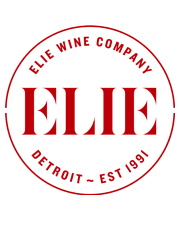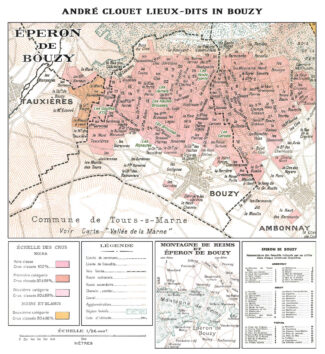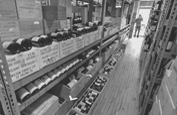From Rock to Wine: Six Domaines Showcase Alsace Grand Crus’ Singularity of Character + Pinot Noir Is Taking Root in Alsace
As a gold medal represents the highest award that an Olympic athlete can win, in the wine world, Grand Cru is the highest designation to which a plot of land can aspire. If you are a lover of French wine (a rhetorical point since you are reading these words), it is no doubt a term that is both mysterious and sacred, as various pieces of earth have been considered in religious tradition from time immemorial; Kashi Viswanathan in India, Mecca in Arabia and Lourdes in France. Although not imbued with supernatural powers of healing, Grand Cru vineyards are saturated in terroir that is considered the ne plus ultra of any wider appellation.
At least, that’s the theory. In our continued exploration of Alsace this week, we find that Grand Cru status has an additional determining factor: Politics. This is not to suggest that these are not the finest wines that Alsace can produce, only that it may not be a guarantee of it, at least compared to Burgundy. Alsace has enormous geological diversity within a fairly constrained area, and each Grand Cru may rightly claim its own unique identity rather than an absolute commitment to rules that would ensure top quality.
And yet, an equal number of vignerons within a designated Grand Cru feel that the existent rules are too harsh.
Regarding this status, Hubert Trimbach, from his domain’s famous address in Ribeauvillé, once said about the Crus, “We are opposed! There is not enough discipline; yields are too high; quality is questionable; prices are ridiculous and criminal … This is a political time-bomb. No, no and no.”
This is a debate that you can moderate yourself, and fortunately, at a reasonable cost. Unlike Burgundy’s Grand Crus, which will usually set you back three figures, even the most prestigious Alsatian Grand Crus are generally around a hundred dollars and most are considerably less than that, as this week’s selection will prove.
The Grand Crus: Singularity of Character
As viewed by an Alsace outsider, who may be able to instantly distinguish between an Echézeaux and a Chambertin, the problem with learning Alsace Grand Crus that are just so damn many of them. Beginning with the Schlossberg of Kaysersberg, the classification first peeked out from under the bed in 1975. A list of 24 new Grand Crus was added in 1983, followed by a further 25 in 1992. Ultimately, Kaefferkopf was added in 2007 to make a total of 51 Alsace Grand Crus.
Combined, they equal about 5.5% of the total vineyard area in Alsace, whereas in Burgundy, Grand Cru appellations account for less than 1%.
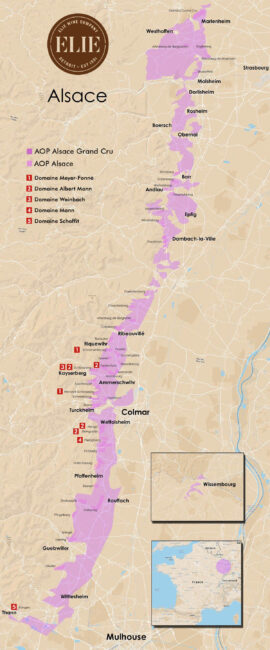
And once you’ve digested the nuts and bolts of Alsace Grand Crus, you can start in on the next course: Alsace Premier Crus. At first pass, you might think this is easy since there are none. But to date, 160 applications have been accepted by the INAO, and these are currently undergoing the rigorous approval process.
In fact, the whole hierarchy system in Alsace may soon see a profound change: Proposed is a new system wherein wines with a complementary denomination would be removed from the regional category and upgraded to a new level similar to Burgundy ‘Villages’ wines. They would be recognized as independent AOPs with specific production rules—‘cahier des charges’—and some high-quality lieux-dits that have shown consistency would be gathered into a new Premier Cru (1er Cru) category, with specific production rules as well.
The irony is that the proposed 1ers Crus vineyards will be delimited in a stricter way than the Grand Crus were, and there is a danger that some will out-perform the lesser Grand Crus.
As it is now, however, Grand Cru will remain as the sole representation at the top tier in Alsace’s exclusivity pyramid, but in the mind of Jean Hugel (of the family-run domain in Riquewihr): “There should have been 20 Grand Crus right from the beginning, and the rest should have been Premier Cru.”
Sugar: The Word That Cannot Speak Its Name
In Alsace, sugar has bedeviled winemakers and consumers for eons, although new regulations might be a little sugar to help the medicine go down.
According to Marc Hugel (Hugel & Fils): “When I first started in the trade 35 years ago, most of our wines contained three grams of sugar per liter or less. Now, most have more. I think there is correlation between our move toward sweet wines and low prices.”
Although dry wines is the purported goal of winemakers to meet a demand for food wine, warmer weather patterns have pushed ripeness, forcing producers to leave residual sugar to keep alcohol levels in check. Extra sugar can also hide; four grams per liter can seem bone dry with high enough acid levels. Another factor is that as wine ages, it tastes less sweet on the palate, a phenomenon that even Marc Hugel can’t explain. “Sometimes I leave residual sugar to keep alcohol moderate, but upon release six or seven years later, it tastes dry.”
The Grand Crus were defined at a time when getting to ripeness was problematic, so they are generally the sites that achieve greatest ripeness, often south-facing hillsides. An outdated regulation requires potential alcohol to reach 10% at harvest, but today it’s more of a problem to restrain alcohol. Even the most committed producers admit that it’s mostly impossible to get completely dry Pinot Gris or Gewürztraminer from Grand Cru sites: “Pinot Gris ripens very rapidly. Sometimes you say you harvest in the morning and it’s dry, you harvest in the afternoon and it’s sweet,” says Étienne Sipp (Louis Sipp). Marc Hugel adds, “Gewürztraminer will reach 13-14% when Riesling gets to 11%. It’s better to have 14% alcohol and 7 g/l sugar than 15% alcohol and bone dry.” Céline Meyer (Domaine Josmeyer) says, “If Gewürztraminer is completely dry it’s not agreeable because it’s too bitter.”
Now, a standardized sweetness guide will be required on all labels of AOP Alsace beginning with wines produced from the 2021 harvest. One option is for labels to contain a visual scale with sweetness levels and an arrow clearly pointing to one specific level. Slightly more information is available in the second option, a designation on each bottle of either Dry (sec): sugar content does not exceed 4 g/l; Medium-Dry (demi-sec): sugar content 4 g/l and 12 g/l; Mellow (moelleux): sugar content of the wine is between 12 g/l and 45 g/l and Sweet (doux): sugar content of the wine exceeds 45 g/l.
Domaine Albert Mann
According to David Schildknecht of The Wine Advocate, “The Barthelmé brothers, Jacky and Maurice, have maintained their position near the forefront of Alsace viticulture by farming a range of relatively far-flung and outstanding vineyards as well as offering excellent value virtually throughout their range.”
The fifty acres for which the Barthelmé are responsible are highly regarded throughout Alsace. Headquartered in the village of Wettolsheim near Colmar, the spirit animal of the operation is Albert Mann, Maurice’s father-in-law. He was the first to hit upon the idea of using modern production tools without neglecting the constraints of the land and his philosophy was to make wine using the elements of the soil, without the help of fertilizers. The Barthelmé brothers have embraced his beliefs and are now at the forefront of organic/biodynamic Alsace producers. The goal of the estate is to produce wine that is in harmony with nature: “Wine is the memory of the grape and is capable of transmitting the taste of the earth.’
The brothers began practicing biodynamic viticulture in 1997 in three of their Grand Cru vineyards, receiving certification from Biodyvin in 2015. This labor-intensive technique is intended to give the wine the purest reflection of its terroir and own identity. Says Maurice, “In ploughing the vineyards, we encourage the roots to descend to a maximum depth to capture the beneficial mineral elements from degraded rock below. Our holdings are divided up into a myriad of distinct plots, thus ensuring that each wine is reflective of their precise origins, while remaining as complex and multi-faceted as possible.”
The domain owns vines in five separate Grand Cru sites.
Hengst and Schlossberg are two of the better known. Hengst (meaning stallion) has a southeast orientation and shallow stony/calcareous soil while Schlossberg, with its steep, terraced slopes of granite, sand and shale, yields particularly expressive wines with pronounced floral bouquets. Both sites produce wines that age superbly.
Grand Cru Hengst
The Hengst Grand Cru lies in the commune of Wintzenheim, at the same latitude as Colmar, below the Hohlandsbourg Castle where altitudes are between 900 and 1200 feet on a steep, homogenous slopes. The vineyard faces south-east and benefits from the warm, dry Colmar microclimate.
Hengst soil structure is composed of oligocene conglomerates and lattorfian-interbedded marl. Although it is located in an early ripening sector, Hengst ripens grapes slowly and resists the development of noble rot. Rich in marl and trace elements, vines develop a high resistance to drought and easily avoid water stress. A significant presence of pebbles ensures that the soils are well drained. The high alkalinity of the soil and limestone substrate (45% active lime) may sometimes cause chlorosis (yellowing leaves) despite the soil being iron rich.
Hengst wines are powerful, complex and dense with bright acidity on the finish. They have great keeping potential, developing more expression with age.
 Domaine Albert Mann, 2019 Alsace Grand Cru Hengst Pinot Gris ($47)
Domaine Albert Mann, 2019 Alsace Grand Cru Hengst Pinot Gris ($47)
Mann’s vines in Hengst are near the depression at the Cru’s center; the vineyard generally runs south-easterly with complicated geological strata that are quite visible to the naked eye. The wine is extremely concentrated and exotic with ripe mangoes, peaches and a core of preserved pears giving softness to the bright acids.
Grand Cru Furstentum
The Furstentum hillside nestles in the bosom of the Kaysersberg valley, where, with a southwest exposure, it is protected from the winds and thrives in an island of Mediterranean calcicolous vegetation. The brown, limestone soil is pebbly and porous with outcrops of bedrock. Covering 75 acres, the marl-limestone-sandstone originates in the Middle Jurassic period, covered at the end with Tertiary conglomerates.
The Cru has a steep grade (37%) to optimize the sun on a soil, allowing heat to accumulate through the day. It is primarily planted to Riesling, Gewürztraminer and Pinot Gris and produces wines of great finesse and remarkable aromatic weight.
D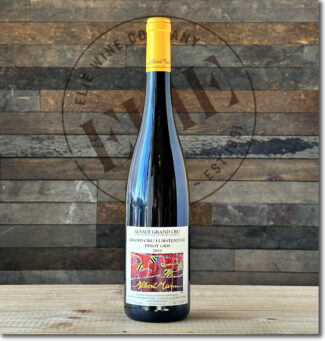 omaine Albert Mann, 2018 Alsace Grand Cru Furstentum Pinot Gris ($45)
omaine Albert Mann, 2018 Alsace Grand Cru Furstentum Pinot Gris ($45)
Furstentum’s iconic floral and blossom signature perfectly offsets the pear/apple of Pinot Gris. Approximately 35% of Alsace’s Grand Cru vineyards are planted to Pinot Gris, and this is a marvelous ambassador for the reason why. The intense, super-ripe pear notes are shored up by fresh pineapple and tangerine.
 Domaine Albert Mann ‘Vieilles Vignes’, 2019 Alsace Grand Cru Furstentum Gewürztraminer ($45)
Domaine Albert Mann ‘Vieilles Vignes’, 2019 Alsace Grand Cru Furstentum Gewürztraminer ($45)
‘Vieilles Vignes’ refers to the fact that these vines are at least 45 years old; it is an archetypal Furstentum Gewürz with violet on the nose with a long-lasting backbone of Mirabelle plum, lychee, peach and unctuous lime marmalade, finishing on a slightly bitter note.
Grand Cru Steingrubler
Steingrubler vineyard sits just to the west of the village of Wettolsheim in the Haut-Rhin department of France. It is one of the more southerly of the Grand Cru sites in Alsace and covers an area of 56.7 acres, predominantly planted to Gewürztraminer. Steingrubler is one of four Grand Crus which run in a line just to the south-west of Colmar; Eichberg, Pfersigberg and Hengst are the other three. Pfersigberg is one of the largest Grand Crus in Alsace and for comparison Steingrubler is less than one-third of its size.
Sitting on the lower slopes of a granite promontory jutting out from the eastern Vosges, a topographical feature mirrored about a mile to the south at the Pfersigberg vineyard and again to the north in Hengst. The slopes enjoy a south-easterly aspect and soils have a heavy colluvial content—rough scree made up of granite, marlstone and limestone that improve drainage of the already dry site. The sandier soils higher up are mostly planted with Riesling, which makes up 26% of the vineyard. The richer clay and limestone below is well-suited to Gewürztraminer, making up 52% of the vineyard. The remaining 22% is Pinot Gris.
As well as being one of the driest vineyard sites in Alsace, Steingrubler is also considered a later-ripening vineyard. In the early-ripening vintage years the wine may be concentrated but remain elegant, combining aromas of candied fruit and, for Gewürz, bitter almonds.
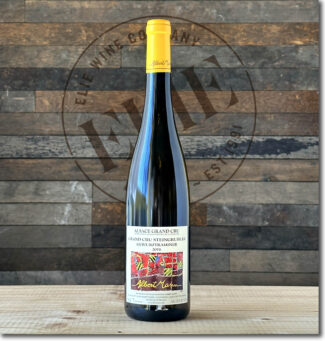 Domaine Albert Mann, 2018 Alsace Grand Cru Steingrubler Gewürztraminer ($45)
Domaine Albert Mann, 2018 Alsace Grand Cru Steingrubler Gewürztraminer ($45)
Bright and perfumed with tropical breeze: Mango, passion fruit, crystallized papaya and fresh ginger dominate. Both silky and crystalline, the flavors of exotic fruit and sweet spice showcase magnificently why the Steingrubler is one of Alsace’s best Grand Crus for Gewürztraminer.
Grand Cru Schlossberg
With 200 acres under vine, Grand Cru Schlossberg is the largest of the region’s Grand Cru sites as well as the oldest, being the first Alsace vineyard granted Grand Cru status when classification began in 1975. It inherited its title from the castle (‘schloss’ in German) at its western edge, which it has stood guard over Kayserberg and the Weisbach Valley for 800 years. The vineyards are even older than the castle as the Roman colonists tended vines here more than 1,500 years ago.
The Schlossberg hillside is composed largely of granite, with the upper layers in an advanced state of decomposition. As a result, the topsoils contain a high proportion of coarse granitic sand, rich in potassium, magnesium and phosphorus of which are minerals that are found in few other vineyards. The distinctive style of Schlossberg Riesling wine is attributed largely to this unusual soil composition. As referenced, apart from a few notable exceptions, all Alsace Grand Cru wines are varietals and may be made from Gewürztraminer, Pinot Gris, Muscat or Riesling, and Schlossberg has each of these varieties planted, although it is particularly well known for its Riesling. It is entirely separate from the smaller Wineck-Schlossberg, two miles to the south.
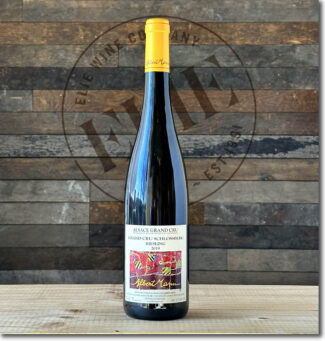 Domaine Albert Mann, 2019 Alsace Grand Cru Schlossberg Riesling ($88)
Domaine Albert Mann, 2019 Alsace Grand Cru Schlossberg Riesling ($88)
A substantial, acid-ripped Riesling that, while exuding youth, is built for the ages. The nose is marked by hawthorn and lime blossom, while on the palate, citrus peel is underlined by a minerality that beautifully expresses the granitic terroir.
Domaine Weinbach
Named after the little stream which runs through the property, Domaine Weinbach was first planted with vines in the 9th century and established as a winery by Capuchin friars in 1612. After being sold as a national property during the French Revolution, it was acquired by the Faller brothers in 1898, who then left it to their son and nephew, Théo Faller. Following his death in 1979, his wife Colette and daughters Catherine and Laurence continued the family’s passion for great wines until the untimely deaths of Colette and Laurence. Since 2016, Catherine has led the estate winery with her sons, Eddy and Théo.
Domaine Weinbach owns 65 acres of vineyards in the Kaysersberg valley in the Haut-Rhin of Alsace at between 600 and 1300 feet above sea level. Vines are grown organically with a view to quality rather than quantity and grapes. Unlike most producers in Alsace, who purchase from négociants, Weinbach vinifies only estate grown grapes, and their aging philosophy is best described as passive, carried out in huge old oak foudres, a technique they believe allows each climat and each terroir (along with the other unique characteristics of grape and vintage) to shimmer through and produce elegant and sophisticated wines.
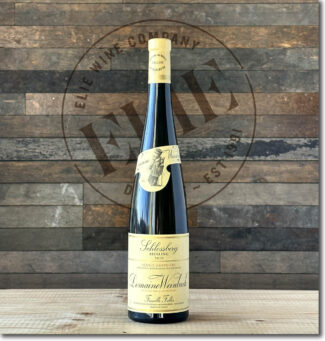 Domaine Weinbach, 2020 Alsace Grand Cru Schlossberg Riesling ($79)
Domaine Weinbach, 2020 Alsace Grand Cru Schlossberg Riesling ($79)
Wild herb and dried citrus zest drive a sensationally crisp wine with hints of mandarin orange, persimmon, jasmine and chamomile. The fruit is ripe and the acidity is vibrant, leading to an intense, long finish flecked with salty minerality.
Domaine Meyer-Fonné
Félix Meyer is one of those winemakers whom you sense is a star that will grow ever brighter with every vintage. He is the third generation in his family to be making wine since his grandfather founded Meyer-Fonné in the late 19th century and since taking over 1992, Félix has modernized equipment, developed export sales and is currently driving the family’s holdings deeply into the best vineyards of Alsace.
According to Félix, “Our vineyard covers eighteen hectares and seven communes, where the nature of the soils, the relief of the land and levels of exposure are varied. The soils range from poor quality filtering alluvial deposits (Colmar) to rich, deep clayey sandstone land in Riquewihr, with granite in between in Katzental, while the relief ranges from the flats of Colmar to the steeply sloping Katzental. The degrees of exposure are also very varied, ranging from the cooler western part which is suitable for the earlier vine types to the south-facing part which is very warm and sunny. This great variety of terroirs constitutes a distinctiveness and a richness in relation to many of the French vineyards.”
A stickler for detail with an overriding sense of responsibility, both his family and the earth, he makes his home in Katzental, known for its distinctive granite soils. With this remarkable terroir beneath his feet, Meyer has developed a knack for mixing wine from various of his parcels into complex and balanced cuvées. Among his cellar tricks is leaving wine to age on lees in large, older foudres, as was once the tradition in Alsace. All of Meyer’s bottlings are characterized by their stunning aromatics and signature backbone of minerality and electric acidity.
Grand Cru Wineck-Schlossberg
Wineck-Schlossberg lies between the communes of Ammerschwihr and Katzental in heartland of the Alsace. It is particularly known for its aromatic Riesling and Gewürztraminer. It is among a cluster of five sites immediately west of the region’s wine capital, Colmar, along with Brand, Florimont, Sommerberg and Kaefferkopf.
Wineck-Schlossberg vineyards cover 65 acres overlooking Katzental. The hillside is composed largely of granite like nearby Sommerberg, with the upper layers in an advanced state of decomposition. As a result, the topsoils contain a high proportion of granitic sand, rich in minerals not found in most other Alsace vineyards. The vines enjoy a south-southeasterly aspect, meaning that the vines are exposed to the ripening rays of the sun throughout the morning and into the afternoon. The slopes are nestled in a high sided valley which gives the site—already in the rain shadow provided by the Vosges mountains—plenty of protection from wind.
The wines are dry, showcasing a subtle balance between, minerality and crystalline fruit.
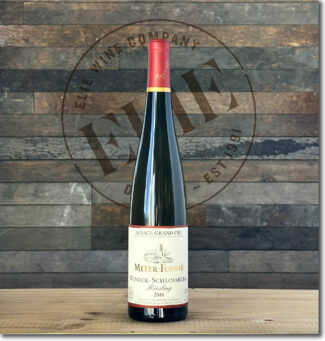 Domaine Meyer-Fonné, 2016 Alsace Grand Cru Wineck-Schlossberg Riesling ($45)
Domaine Meyer-Fonné, 2016 Alsace Grand Cru Wineck-Schlossberg Riesling ($45)
The crumbly binary mica granite known as ‘de Turckheim’ in the Wineck-Schlossberg Grand Cru gives this wine a pure and delicate with (as suits the winemaker’s name) Meyer lemon and fresh tarragon lacing white peach, grated ginger, lemon curd and stone notes.
Grand Cru Schoenenbourg
Schoenenbourg lines the south-facing hillside above the communes of Riquewihr and Zellenberg; at 132 acres it is one of the larger of Alsace’s Grand Cru sites. Although it is viewed as being at the core of Alsace’s prime vineyard belt, located in a crop of about ten Grand Crus between the towns of Colmar and Ribeauvillé, Schoenenbourg is slightly removed from the lower slopes of the Vosges Mountains where most of the other Alsace Grand Crus are to be found. The slopes rise steeply from 870 feet to around 1,250 feet from the northern walls of Riquewihr.
The soils are varied across this long, thin site, leading to variability in Schoenenbourg wines depending on the exact parcels of land where the grapes were grown. Marlstone, locally called Keuper after the geological period of the same name, is a dominant soil type, often covered by a fine layer of sandstone. The more unusual soil component here is gypsum, deposited when oceans covered the area during the Jurassic period more than 150 million years ago. Gypsum brings a particular combination of mineral richness to the wines; it also has a higher water-retention rate and is the secret behind Schoenenbourg’s botrytized wines from, sold as Selections de Grains Nobles.
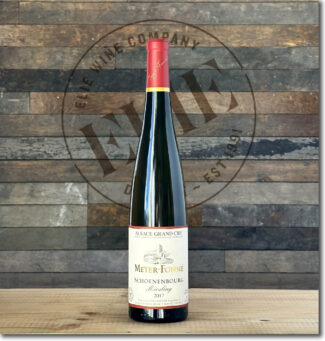 Domaine Meyer-Fonné, 2017 Alsace Grand Cru Schoenenbourg Riesling ($50)
Domaine Meyer-Fonné, 2017 Alsace Grand Cru Schoenenbourg Riesling ($50)
Only ten cases of this wonderful elixir make it to the United States every year; it comes from a third of an acre of 30-year-old vines planted on the Cru’s typical ‘marne verte de Keuper’ soil. It is fermented in temperature-controlled stainless-steel tanks and oak barrels over a period of 1-3 months. It is a precise, dry, mineral-focused Riesling combining ripe apple flavors with bright lemon and shows subtle chalk on the finish.
Domaine Mann
After stints in Côte-Rôtie and Champagne, where he learned the value of biodynamics from Bertrand Gautherot, Sébastien Mann has been making wine at the family estate since 2009, taking over from his father. He says, “I think that thanks to biodynamics, we have succeeded in bringing an additional element to our vines. My father made wines essentially linked to the earth; I have a much more holistic style, linked to the stars.”
Domaine Mann’s 32 acres were founded upon the theory that in order to produce terroir-driven wines with aging potential, legally allowable yields have to be cut in half. From the outset, the estate produced 35 cuvées, one for each parcel.
“The style of the wines changed very quickly when I came on board,” Sébastien maintains. “95% of the wines we produce now are dry. It was not an easy task, since Alsace is one of the warmest and driest regions in France. Grapes can easily ripen with a high sugar level. I don’t think my father could imagine that with biodynamics we would be able to achieve such a great evolution, achieving phenolic maturity while making dry wines.”
Grand Cru Pfersigberg
Pfersigberg is the third-largest Alsace Grand Cru, covering 184 acres immediately to the west of Eguisheim. It is overlooked by the Trois Donjons the city’s three towers once used by agrarians as a timepiece, noting the position of their relative shadows to track the progress of the sun.
Pfersigberg slopes are some of the most gentle in Alsace, rising from 720 feet at their eastern edge to a little over a thousand feet in the west. There is a marked difference between the topography here and the steep, almost unmanageable slopes of Grand Cru sites of Zinnkoepfle and Rangen. The soil is predominantly limestone and marl with a higher quantity of clay than is usual this far away from the river basin. This clay reduces the drainage efficiency of the local soils.
Pfersigberg is one of the driest vineyard sites in Alsace and the climate of the area overall is continental, with marked low rainfall due to the shadow cast by the Vosges. The mountains also provide protection from the prevailing westerly winds.
The site produces wines with ample body and dense, straight-forward acidity marked by citrus fruits, notably limes. Nervous and willowy, the wine’s purity enhances the aromas of flowers and the minerality expresses itself in the length.
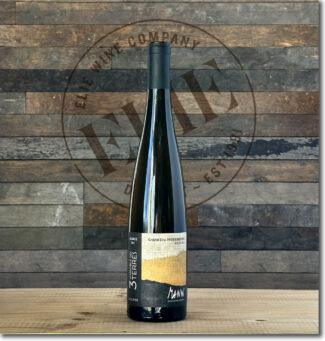 Domaine Mann, 2018 Alsace Grand Cru Pfersigberg Riesling ($69)
Domaine Mann, 2018 Alsace Grand Cru Pfersigberg Riesling ($69)
The techniques used in this dry, delightful wine include manual harvesting in boxes, gentle and long pressing times, natural fermentation on indigenous yeasts and aging on the lees for a year. The wine is juicy and transparent, presenting white peach and lime beside piquant hints of caraway, peach kernel, citrus zest and chalk.
Domaine Schoffit
To call a man a ‘pioneer’ who cultivates wine country that has been famous for eight hundred years (vintage 1228 was described as ‘extremely good; so hot you could fry an egg in the sand’) may seem a stretch, but the spirit that impelled Bernard Schoffit to purchase 16 acres around Clos St. Theobold belongs to a frontiersman. Previously abandoned because the slopes were deemed too steep to work, the vines in question (in Rangen de Thann AOP) grew on a plot of soil that has been likened to Montrachet and Chambertin. And from this forbidding site, relying on extremely low yields, he is making extraordinary wine with each cépage.
In addition, Schoffit raises grapes in the lieu-dit Harth, an alluvial terroir close to the commercial area of Hussen in northern Colmar, and three acres in the granitic Grand Cru Sommerberg to the south of Katzental and to the north of Niedermorschwihr. In Harth, Schoffit tends 80 years old Chasselas vines, of which a few percent are replanted each year as an illustration of Schoffit’s long-term perspective
Based near Colmar, Bernard took the winery over from his father Robert and his son Alexandre is now a co-owner. Demonstrating the estate’s commitment to sustainable agriculture Alexandre maintains, “All our vineyards are organic, and we also started to work biodynamic a few years ago. In order to show more transparency, I decided in 2016 to launch the official certification process, but for administrative reasons it was stretched over different years. The first wines officially labeled fully organic will be some cuvées of the 2019 vintage (Harth Riesling and Harth Pinot Gris for example), and the rest of the classic range will follow in the 2020 vintage. For the Grand Crus, it will be from the 2022 vintage. The official certification for biodynamic is in progress and we are still waiting to know from when we will be able to use it on the labels. But for now, Domaine Schoffit gives the assurance that we are both bio and biodynamic!”
Grand Cru Rangen
Volcanic upheaval is the name of the game at inconspicuous hillside adjacent to the town of Thann, making it a geological anomaly in the Vosges Mountains. But there even more bang for that buck—while ploughing Rangen acres that had abandoned for multiple generations, Olivier Humbrecht (Domaine Zind-Humbrecht) uncovered three unexploded bombs from World War II. Dotting the eastern slopes of the Vosges Mountains and is notable for more than just its terroir: Rangen is the only site in Alsace to be classified as Grand Cru in its entirety, and is home to the highly respected Clos Saint Urbain and Clos Saint Théobald vineyards.
In Rangen, the altitude climbs higher (1100 to 1525 feet) and the slopes have an average gradient of 60%. It is predominantly planted to Pinot Gris, the variety that accounts for 57% of vines; Riesling represents about a third of the site while Gewürztraminer is 10%. Despite its southerly aspect, Rangen is late-ripening, mainly due to its higher rainfall and cool winds which also make the site more prone to botrytis and its attendant Sélection Grains Nobles and/or Vendanges Tardives sweet wines.
The late-ripening terroir also increases power (and often alcohol) in the wines. Wines from Rangen are often described as having a ‘smoky’ taste.
 Domaine Schoffit, 2019 Alsace Grand Cru Rangen ‘Clos Saint-Théobald’ Riesling ($59)
Domaine Schoffit, 2019 Alsace Grand Cru Rangen ‘Clos Saint-Théobald’ Riesling ($59)
The volcanic soils of Rangen, characterized by their low clay content, lie beneath one of the warmest plots in the region, a combination that generally pushes this Grand Cru to the top of the list. At 14.3% abv, it is precise and potent in comparison to a German Riesling, showing dried peach, lemon curd, fresh lime and Rangen’s classic, slightly resinous aromas of fresh rosemary.
SGN: The Quintessence of Alsace Wines
Alsace’s semi-continental climate sees very little rain and—especially in the autumn—remarkably consistent sunshine. This is ideal for extended ripening as well as the development of noble rot. Particularly suited to these effects Riesling, Muscat, Pinot Gris and Gewürztraminer d’Alsace, often several weeks after the normal harvest time when the berries are ultimately at their best.
Sélections de Grains Nobles grapes are obtained from harvesting grapes with noble rot where the driest berries are kept. This particularly high sugar content creates more discreet varietal flavor with enhanced intensity, complexity and remarkable length.
After substantial efforts undertaken by wine-makers, the official recognition of Sélections de Grains Nobles was made by a ministerial decree; March 1, 1984.
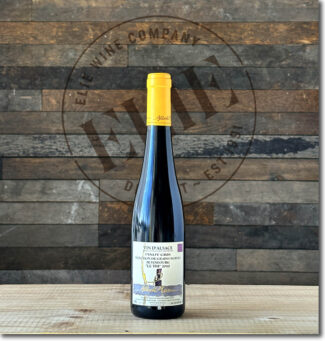 Domaine Albert Mann ‘Le Tri’, 2010 Alsace lieu-dit ‘Altenbourg’ Sélection de Grains Nobles SGN Pinot Gris ($126) 375 ml
Domaine Albert Mann ‘Le Tri’, 2010 Alsace lieu-dit ‘Altenbourg’ Sélection de Grains Nobles SGN Pinot Gris ($126) 375 ml
The residual sugar is met by a near-doubling of acidity leading to a beautifully balanced dessert-style wine powered by notes of candied lime peel, grapefruit marmalade, honey, marzipan, lanolin and vanilla.
The Upside of Climate Change: Pinot Noir is Taking Root in Alsace
Global warming is potentially an earth-ending reality, but if anybody is snatching victory from the jaws of defeat, it is Alsace. According to winemakers there, the overall increase in temperature, though only a few degrees, is enough to allow their Pinot Noir to ripen more fully, producing wines with greater concentration, both in flavor and color.
This is a remarkable turn of events, since 90% of all wines produced in Alsace are white, made from the multitude of varieties mentioned above. The surprise of the century, Pinot Noir d’Alsace quality levels not only from warmer, dryer summers, but because of a dedication of winemakers to plant the grape in higher-quality growing areas once reserved for prized white varieties. Pinot Noir plantings are skyrocketing in Alsace, rising from 2% in the last century to more than 10% today.
If the trend continues (and there is no reason to suppose it won’t) we will likely be introduced to a Pinot Noir Grand Cru, and sooner rather than later—likely before the end of the planet.
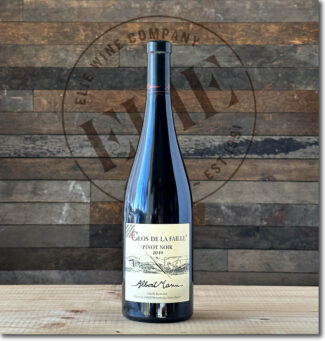 Domaine Albert Mann, 2018 Alsace Pinot Noir lieu-dit ‘Clos de la Faille’ ($88)
Domaine Albert Mann, 2018 Alsace Pinot Noir lieu-dit ‘Clos de la Faille’ ($88)
The Clos de la Faille monopole is just under three acres located near the Grand Cru Hengst; it is the only Clos in Alsace planted with 100% Pinot Noir. It is divided into three sections—the upper part consisting of pink, mottled and calcareous sandstone; in the middle, there is grey shell limestone with a very fine grain and yellow Jura rock, and in the lower part, a mixture of Vosges sandstone and white and pink quartz; the vines were planted between 1998 and 2002. The wine shows a nice leather and forest-leaf profile, opening to blackberry, cedar, smoke and chocolate.
 Domaine Meyer-Fonné, 2017 Alsace lieu-dit ‘Altenbourg’ Pinot Noir ($48)
Domaine Meyer-Fonné, 2017 Alsace lieu-dit ‘Altenbourg’ Pinot Noir ($48)
Among the best of Alsace’s new guard of Pinot Noirs, this seductive wine, with seductive notes of tea leaves, strawberries and blackberries, is in the class of many Premier Cru Burgundies. It is spectacular now, and should improve for a decade.
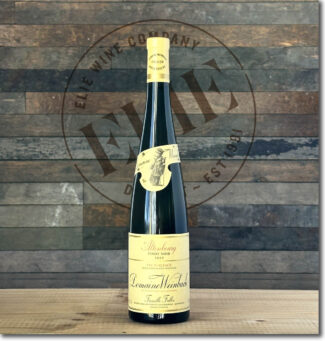 Domaine Weinbach, 2019 Alsace lieu-dit ‘Altenbourg’ Pinot Noir ($110)
Domaine Weinbach, 2019 Alsace lieu-dit ‘Altenbourg’ Pinot Noir ($110)
Lieu-dit Altenbourg lies at around 800 feet elevation just below Grand Cru Furstentum. Wines from this terroir are made from grapes harvested in the Kientzheim-Kaysersberg valley, just below the foothills of the Vosges Mountains. Although it does not possess Grand Cru status itself, Altenbourg is considered as good as many Crus that do hold the title. The wine is rustic and redolent with scents of cranberries, strawberries and raspberries with supple, soft tannins.
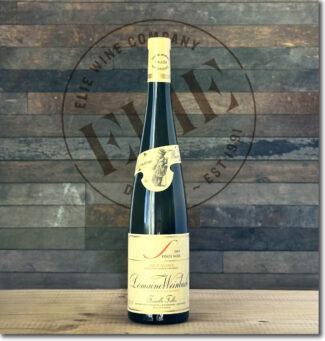 Domaine Weinbach ‘S’, 2019 Alsace Pinot Noir ($110)
Domaine Weinbach ‘S’, 2019 Alsace Pinot Noir ($110)
According to Catherine Faller, Domaine Weinbach’s third-generation proprietor, “Pinot Noir is to red wine what Riesling is to white wine. Neither copes with mediocrity.” As a result, the goal is low yields and perfect grape maturity. The grapes in the ‘S’ series were sourced from the Grand Cru vineyard Schlossberg and offer elegant, fresh cherry and herb on the nose and a supple mouthfeel with some sappiness.
 Domaine Schoffit ‘Vieilles Vignes Vendange Entière’, 2018 Alsace Pinot Noir ($33)
Domaine Schoffit ‘Vieilles Vignes Vendange Entière’, 2018 Alsace Pinot Noir ($33)
‘Vendange Entière’ refers to whole-cluster fermentation—a cellar technique intended to make a given wine more complex, weaving in spicy and herbal while adding candied and airy fruit and tannin structure, and also, to smooth out high acidity. In short, it is a method winemakers use to override anything lacking in a cool climate Pinot. Here, it works, and the wine is finely knit, featuring crushed black cherry, mandarin orange peel, Herbes de Provence and anise notes.
Domaine Valentin Zusslin
Aligned with the same winemaking traditions it first established in 1691, Zusslin is located in the southern part of Alsace in Orschwir on the Bollenberg, Clos Liebenberg (a Zusslin monopole) and the hillsides of Pfingstberg Grand Cru.
Early to the Crémant game, the domain was also an early practitioner of biodynamics, having introduced this philosophy to viticulture in 1997. Says Valentin (whose name, perhaps, makes this an iconic sparkling wine for February 14): “We plant cover crops to encourage good insects and microbial life for the soil, encourage bees to pollinate the beneficial plants and we grow trees to attract the birds that eat the harmful bugs. This way of thinking carries through everything we do in the fields and in the winery.”
In addition, his wife Marie insists that their lifestyle goes far beyond a philosophy, and as evidence, she indicates the wall on the property that bears names of 13 generations of Zusslin winegrowers: “We represent not only history, but the circle of life.”
 Domaine Valentin Zusslin, 2018 Alsace lieu-dit ‘Bollenberg’ Pinot Noir ($48)
Domaine Valentin Zusslin, 2018 Alsace lieu-dit ‘Bollenberg’ Pinot Noir ($48)
A biodynamic and 100% Pinot Noir from the long awaited 2018 vintage, the wine is from vines planted on the slopes of the Bollenberg lieu-dit, where the limestone equates to finesse and a salty undertone. The vineyard sits at the foot of the Vosges Mountains in one of the driest places in France with only about 15 inches of annual rainfall. Supple and silky, showing tones of cherry and minerality.
Notebook …
Winegrape Variety Over Geography?
Alsace has changed hands between Germany and France five times since 1681, the last time in 1945 when French finally became the official language. That said, the blats of the oompah band have not faded into the distant: Most of the vineyards have Germanic names and despite the official rule of thumb, the dialect spoken by Alsatians is a hybrid of French and German. Prior to the post World War I change of flags, Alsace was a main priority for the German authorities whose ultimate goal was Germanizing Alsace and its inhabitants, and wine was one of their first targets. During the war, occupied Alsace was prohibited from selling its wines using the region’s name. Winemakers were allowed to blend as they saw fit, even if doing so eliminated the distinctive characteristics that have come to be associated with Alsace. Riesling and Gewürztraminer—two of Alsace’s most significant grape varieties—were declared illegal.
Another upshot of this hybrid culture is that Germans have not historically be known to champion terroir. Certainly vineyards are of utmost importance to label classification and price, but sweetness levels and grape types are more the focus. As such, Alsace mentions the grape variety on the label, generally unheard-of in France. Terroir was never historically used to market wines in Alsace; the industry was organized to sell combinations of brands and varieties rather than shared vineyards.
Anne Trimbach (of the renowned Ribeauvillé domain) speaks of a recent change of heart: “When we leased a number of hectares from the convent, one of the conditions that the nuns put in place was that we would change our strategy and reference ‘Grand Cru’ on the label. The Family discussed it at length and decided that it was a natural progression. It just seemed like the right time to take that step, as I felt buyers and sommeliers were increasingly aware of and interested in terroir in Alsace.”
- - -
Posted on 2023.03.02 in France, Alsace | Read more...
A Portrait of The Wine as a Grape: The Pure Expression of Alsace’s Varietal Wines Domaine Schoffit in Six Grapes (6-Bottle Pack $189) + Alsace: Under Pressure (3-Bottle Pack $110)
If you’re ever called upon to distill the essence of Alsatian wine into a single, simplistic phrase, you might say: ‘German varietals done in French styles.’
Of course, like Alsace itself, nothing about wine is simple, and it’s a fact that Alsace produces some of the most complex and thought-provoking wines of any region on earth. But on the surface, the summation is absolutely accurate; the territory’s French/German connection is forged in history. These two European neighbors have struggled over possession of Alsace since 357 AD.
Located on the west bank of the upper Rhine next to Germany and Switzerland, the region has switched hands between France and Germany four times since 1870, so it’s no surprise that the cultural underpinnings of the region have one foot in France and the other in Germany, and that their food and wine traditions follow the split-personality scheme. Culinary Alsace is an Alemannic and Frankish melting pot, with popular dishes including Baeckeoffe, Flammekueche, Choucroute, Cordon bleu and Vol-au-vent, while the seven grapes legally allowed for wine production in Alsace are the Germanic standbys—Pinot Blanc, Sylvaner, Riesling, Muscat, Pinot Gris, Gewürztraminer and the only red wine produced in Alsace, Pinot Noir. Alsatian alchemy transforms these familiar stand-by varietals into rich, balanced, often ethereal incarnations, from intensely aromatic and crispy dry versions, to the mellow, sweet Vendange Tardive (late harvest) and Sélection de Grains Nobles, to the sparkling Crémant d’Alsace—a slightly sparkling wine produced with the traditional Champagne method of secondary fermentation inside the bottle and representing a quarter of all Vins d’Alsace production.
So intense and beautiful are these wines that they frequently remind us of Cinderella: varietals that may elsewhere be plain and plebian, born to clean chimneys in other wine regions, but who don their full Princess Ball regalia in Alsace.
This week’s package includes six bottles from Alsace’s wunderkind Bernard Schoffit, whose reclamation of an abandoned vineyard in Rangen de Thann has put him in the crosshairs of wine experts across the globe. ($189)
Additionally, superb examples of lyrical Crémant d’Alsace are available in a three-bottle pack ($110).
Alsace: A Geologist’s Dream
An Alsace cliché: ‘Walk 100 feet in any direction and you’ll find a totally different soil composition.’
The terroir of Alsace is, in fact, a mosaic of diversity; soils underlying the vineyards are a tapestry ranging from the schist and granite of the higher elevations (extending into the Vosges Mountains) to the limestone and chalk of the lower slopes and to the clay and gravel of the valley floors. However, it is the unique, reddish-colored sandstone of Alsace—known as grès des Vosges—that may be most interesting. Vosges sandstone runs in a large, horizontal swath through the range just below the granite layer from which it is derived and atop a layer of coal. Grès des Vosges is hard, compact sandstone composed mainly of quartz and feldspar. Its pink-reddish color is due to the presence of decomposing iron (iron oxide, as also seen in red soils throughout the world) that occurred as a result of the slow cooling of large masses of magma as it hardened into granite.
Most of the wine-making villages in Alsace are built on four or five different formations in a juxtaposition of often-restrained parcels, providing a montage of uniquely abundant and diverse soils. These infinite variations are the very heart of the exceptional diversity found in the Vins d’Alsace.
Seven Grapes in Search of Terroir
As we’ve seen, geologic forces some 45 million years ago resulted in thousands of feet of downward drop of the broad rift valley through which the Rhine River now flows; the soils left by these tectonic machinations is a byzantine patchwork that can vary tremendously over a very short distance. These changes profoundly affect the suitability of each patch of ground for a particular grape variety.
Thus, Gewürztraminer is grown on the sandstone soils of the Kitterlé vineyard while profound Rieslings grown of the granitic soils of the Sommerberg. Refined Sylvaners grow on the limestone of the Zotzenberg vineyard, Pinot Blanc prefers rich, deep soil and Muscat fairs best on marl and sandstone. So well-matched is situation to varietal that unlike elsewhere in France, that by law and tradition, Alsace labels wine with grape variety first and by geographic location as an afterthought.
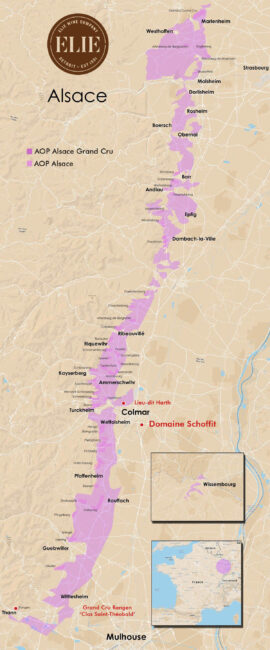
The Enigma of The Grand Crus
Among the assorted anomalies that makes Alsace unique in France is a somewhat ambivalent attitude toward its own Grand Crus. Although there are 51 of them, not every producer or even every Grand Cru is happy with the restrictive, creativity-squashing rules that bind them. For example, with very few exemptions, Alsace Grand Cru must be a white wine produced 100% from a single variety of the four ‘Noble’ grapes—Riesling, Gewürztraminer, Pinot Gris or Muscat, which may be Muscat Ottonel, Blanc à Petits Grains, and/or Rosé à Petits Grains variations. Alsace Grand Cru wines must be vintage dated, cannot be released until June 1 of the year following harvest and are required to be bottled in a traditional Flûte d’Alsace. Vendange Tardive (late harvest) and Sélection de Grains Nobles (botrytis-affected) wines must be hand-harvested and require an additional year of aging.
Generally located at altitudes between 650 and 1300 feet, where grades are often quite steep, Grand Crus benefit from distinguishing soils as well as exposures and micro-climates that promote slow, consistent grape maturation—a key factor in developing the finely expressed aromas of Alsace wines.
As noted, among the exceptions to the ‘100%’ rule is Altenberg de Bergheim, located in the hills above the commune of Bergheim in the Haut-Rhin. It is the only Alsace Grand Cru wine allowed to contain Pinot Noir, and blends must be 50-70% Riesling, 10-25% Pinot Gris, 10-25% Gewürztraminer and may contain up to 10% (combined) Chasselas, Muscat (à Petits Grains or Muscat Ottonnel), Pinot Noir, and/or Pinot Blanc. Kaefferkopf Grand Cru is also allowed to produce blends, using 60-80% Gewurztraminer and 10-40% Riesling; they may also include up to 30% Pinot Gris and up to 10% Muscat.
Domaine Schoffit
Alsace’s Reclaimed Treasures
As the southernmost Grand Cru, Rangen de Thanni is a fitting ‘ciao’ to Alsace; ‘ciao’, of course, can translate to either ‘hello’ or ‘goodbye’ depending on the direction you are heading. With Bernard Schoffit, it is high time the world gave him a hearty hello and never mind the rest; he is a star who has not yet supernovaed in the wine universe, and as a result, his gems are extremely affordable.
To call a man a ‘pioneer’ who cultivates wine country that has been famous for eight hundred years (vintage 1228 was described as ‘extremely good; so hot you could fry an egg in the sand’) may seem a stretch, but the spirit that impelled Bernard Schoffit to purchase 16 acres around Clos St. Théobold belongs to a frontiersman. Previously abandoned because the slopes were deemed too steep to work, the vines in question (in Rangen de Thann AOP) grew on a plot of soil that has been likened to Montrachet and Chambertin. And from this forbidding site, relying on extremely low yields, he is making extraordinary wine with each cépage.
In addition, Schoffit raises grapes in the lieu-dit Harth, an alluvial terroir close to the commercial area of Hussen in northern Colmar, and three acres in the granitic Grand Cru Sommerberg to the south of Katzenthal and to the north of Niedermorschwihr. In Harth, Schoffit tends 80 years old Chasselas vines, of which a few percent are replanted each year as an illustration of Schoffit’s long-term perspective.
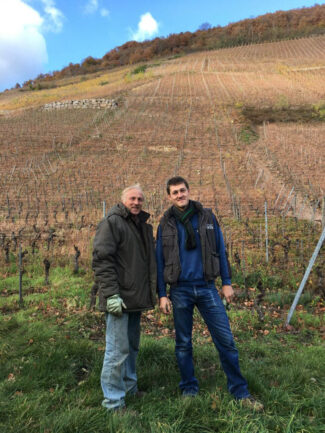
Bernard and Alexandre Schoffit, photo courtesy of Savage Selection
Based near Colmar, Bernard took the winery over from his father Robert and his son Alexandre is now a co-owner. Demonstrating the estate’s commitment to sustainable agriculture Alexandre maintains, “All our vineyards are organic, and we also started to work biodynamic a few years ago. In order to show more transparency, I decided in 2016 to launch the official certification process, but for administrative reasons it was stretched over different years. The first wines officially labeled fully organic will be some cuvées of the 2019 vintage (Harth Riesling and Harth Pinot Gris for example), and the rest of the classic range will follow in the 2020 vintage. For the Grand Crus, it will be from the 2022 vintage. The official certification for biodynamic is in progress and we are still waiting to know from when we will be able to use it on the labels. But for now, Domaine Schoffit gives the assurance that we are both bio and biodynamic!”
Pinot Blanc d’Alsace
‘Light, Supple and Spring-like’
Pinot Blanc is often thought of as understudy to Chardonnay (especially in Burgundy, where it is still permitted in many Grand Cru vineyards), but it takes on the diva’s role in Alsace. It is the region’s favorite mutant, the ‘white sheep’ of the Noir family since it is a genetic anomaly that originated as Pinot Noir, but with a smaller concentration of color-producing anthocyanins. Alsace puts the grape to work in the production of still, sparkling and sweet dessert wines, although it is frequently overshadowed by more popular Alsatian gems made from Gewürztraminer and Riesling.
Pinot Blanc d’Alsace frequently displays toasted almond aromas with hints of pie spice; nutmeg especially. On the palate they show a range of creamy applesauce flavors, and may display some light mineral characteristics, although these are generally muted by the oak treatment that Alsatian winemakers tend to favor.
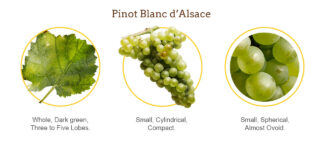
 •1• Domaine Schoffit ‘Vieilles Vignes’, 2020 Alsace Pinot Blanc – Auxerrois ($20)
•1• Domaine Schoffit ‘Vieilles Vignes’, 2020 Alsace Pinot Blanc – Auxerrois ($20)
Made from 50-year-old vines, the vinification starts with gentle pressing and clarification of cool must for 48 hours. The wine displays subtle notes of yellow plum with a pure-fruit edge translating to freshness on the nose. The assemblage includes some Auxerrois, which lends stone fruit flavors and a lucid lemon-ginger zing to the mid-palate while white plum notes follow through to a mineral-driven finish.
Chesselas d’Alsace
‘Light with Discreet Fruitiness”
The main grape in the German wine Edelzwicker, Chasselas is no longer widely planted in Alsace despite its productivity, although it’s a cornerstone varietal in its homeland, nearby Switzerland, where it is the second most-planted vine.
Under normal harvest conditions Chasselas produces somewhat bland, fruity wines that do not have much longevity in the bottle. But by keeping yields low and vines thirsty, it produces smaller berries with much more concentration—a hallmark of all fine Alsace wines.
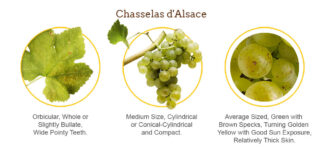
 •2• Domaine Schoffit ‘Vieilles Vignes’, 2020 Alsace Chasselas ($25)
•2• Domaine Schoffit ‘Vieilles Vignes’, 2020 Alsace Chasselas ($25)
100% Chasselas. From a two-acre parcel planted in 1935 on alluvial, gravel-filled soils of gravel in Colmar; entirely hand-harvested, fermented and aged in stainless steel tanks. The wine hints of fresh and corn husk in a delightfully dry nose and palate fresh with lemon peel and peach, with a subtle undertone of Bosc pear. The finish is classically dry finish with mouthwatering salinity.
Riesling d’Alsace
‘Elegant, Fresh and Delicately Aromatic’
With little space for argument, the statement can be made that Alsace produces some of the most terroir-reflective Rieslings on earth, echoing precisely the mix of granite, limestone, schist and sandstone on which they are grown. The wine is rarely oaked and only produced in off-dry versions labeled Vendange Tardive (late harvest) or Sélection de Grains Nobles (from grapes affected by botrytis). In general, it is the most prolific grape among Alsatian vineyards, accounting for 22% of planted acreage Average annual Riesling production is about 2.8 million cases by some 950 producers.
The wines are intensely linear, and have a distinctively complex acid structure and high concentration. Aromatic and expressive, they display intense aromas of citrus, peach, pear, white flowers and a steely minerality and are particularly well-suited to aging, where the fruit recedes and yields to aromas of beeswax, lanolin, butter, smoke, pine, honey, butterscotch, mushroom, lemon candy and especially, overtones of gasoline, which is more delectable than it sounds.

 •3• Domaine Schoffit, 2019 Alsace Grand Cru Rangen ‘Clos Saint-Théobald’ Riesling ($59)
•3• Domaine Schoffit, 2019 Alsace Grand Cru Rangen ‘Clos Saint-Théobald’ Riesling ($59)
The volcanic soils of Rangen, characterized by their low clay content, lie beneath one of the warmest plots in the region, a combination that generally pushes this Grand Cru to the top of the list. At 14.3% abv, it is precise and potent in comparison to a German Riesling, showing dried peach, lemon curd, fresh lime and Rangen’s classic, slightly resinous aromas of fresh rosemary.
Gewürztraminer d’Alsace
‘Intense, exuberant and Aromatic’
If ever a grape variety can be thought of as an ‘acquired taste’, it’s Gewürztraminer, whose unctuous, oily, often musky scent is (at least) easy to recognize. It is a white wine, although the grapes themselves are pink and impart a slight tint to the juice, making it a wine identifiable not only by bouquet, but by color alone.
Gewürz performs best on the heavier, clay soils of Alsace’s Haut-Rhin department, and can quite easily attain the sort of ripeness needed for the sensational late-harvest bottlings labelled Vendange Tardive and Sélection de Grains Nobles. That said, the variety ripens so fast it needs to be planted somewhere relatively cool if it is to develop any discernible perfume but must be harvested while acid levels remain high enough to balance sugars.
Picked judiciously, Alsace Gewürztraminer ‘sec’ is pungent, dry and powerful enough to accompany rich food, and reaches heights of complexity here unmatched anywhere else in the world.
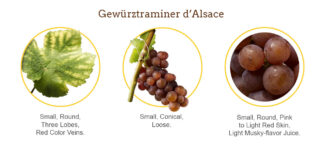
 •4• Domaine Schoffit ‘Cuvée Caroline’, 2019 Alsace ‘lieu-dit Harth’ Gewürztraminer ($26)
•4• Domaine Schoffit ‘Cuvée Caroline’, 2019 Alsace ‘lieu-dit Harth’ Gewürztraminer ($26)
A classically concentrated Alsatian Gewürz, with unctuous flavors of tropical fruit, honey, pear and lychee in front of a distinct smokiness. Lengthy, fresh, and a touch bitter on the finish, with top notes of orange pith.
Pinot Gris d’Alsace
‘Generous, Ample and Full Bodied’
Another mutation within the Pinot family, Pinot Gris is a sibling of Pinot Noir and Pinot Blanc, and perhaps among the most double-faced grapes on earth: It creates the light, crisp, often forgettable Pinot Grigios of northern Italy and (without undergoing any mutations whatsoever) becomes rich and unctuous in Alsace. Location, location, location… and restricted yields.
Most identifiable by ripe poached pear notes, in Alsace the grape also reveals a floral, flinty, smoky, spicy and honeyed profile, allowing winemakers revel in the possibilities.
“In the past, Grand Cru Alsace Pinot Gris was usually made in an off-dry or sweet style, but today, it is possible to make it in a dry style,” says Alsatian winemaker Samuel Tottoli. “For me, it is necessary to vinify it dry. Low yields from stony vineyards ensure the wine is concentrated, while prime sites with well-drained soils further promote ripening before too much sugar develops in the grapes.”

 •5• Domaine Schoffit ‘Tradition’, 2019 Alsace ‘lieu-dit Harth’ Pinot Gris ($26)
•5• Domaine Schoffit ‘Tradition’, 2019 Alsace ‘lieu-dit Harth’ Pinot Gris ($26)
When the word ‘Tradition’ appears on a Schoffit label, expect a dry wine. When it reads ‘lieu-dit Harth’, it comes from a prized vineyard near Colmar and you expect a super ripe, full-bodied wine that amplifies the profile of the varietal. In this case, the pear notes that often define Pinot Gris are a symphony, with highlighted sections of bright acidity, high-toned cinnamon and gentle wood smoke. In the fourth and final movement, look for citrus, jasmine, melon and pineapple.
Pinot Noir d’Alsace
‘Full-bodied, Heady and Intensely Fruity’
Pinot Noir in Alsace—the only red wine grape permitted by AOP law—is a poster child for the upside of climate change. Once capable of producing only highly acidic, thin-bodied wine except in rare vintages, the slow creep of temperature increases throughout the region has seen a remarkable make-over for Burgundy’s pet red: Pinot Noir d’Alsace is currently producing rustic wines that showcase the varietal’s classic cherries, cranberries, strawberries and raspberries cloaked in supple, soft tannins. In the hands of top producers in particularly warm seasons, these wines are as earthy and complex as Cru Burgundy.

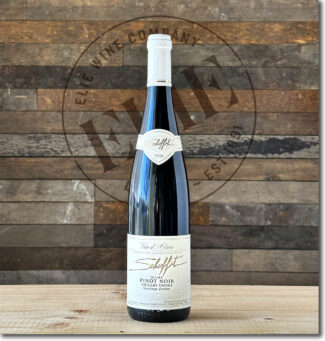 •6• Domaine Schoffit ‘Vieilles Vignes Vendange Entière’, 2018 Alsace Pinot Noir ($33)
•6• Domaine Schoffit ‘Vieilles Vignes Vendange Entière’, 2018 Alsace Pinot Noir ($33)
‘Vendange Entière’ refers to whole-cluster fermentation—a cellar technique intended to make a given wine more complex, weaving in spicy and herbal while adding candied and airy fruit and tannin structure, and also, to smooth out high acidity. In short, it is a method winemakers use to override anything lacking in a cool climate Pinot. Here, it works, and the wine is finely knit, featuring crushed black cherry, mandarin orange peel, Herbes de Provence and anise notes.
Crémant d’Alsace
Under Pressure
Alsace contains three individual AOPs: The general Alsace AOP to cover white, rosé and red wines; Alsace Grand Cru AOP for white wines from certain classified vineyards, and the newest kid on the block—Crémant d’Alsace AOP for sparkling wines—a designation made formally effective in1976. From this latter region comes 30 million bottles of sparkling wine per year, a staggering figure until you compare it to Champagne’s 300 million bottles.
As in the Grand Crus of Alsace, Crémant AOP is riddled with rules, some stricter than Champagne. Among them, allowed varieties are Auxerrois, Chardonnay, Pinot Blanc, Pinot Gris, Pinot Noir and Riesling, and unlike Champagne, Rosé may only be made from Pinot Noir. Additionally, the harvest must come grapes have to come from vines into its 3rd growing season and the wine may not be bottled for the second fermentation before January 1 of the year after the harvest. The wine must then spend at least 12 months ‘sur latte’ before disgorging. It is—like Champagne—required to be made via Méthode traditionnelle.
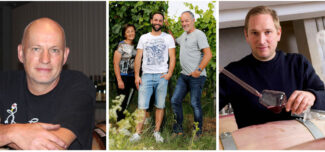
left to right … Jacky Barthelmé, Sébastien Mann and parents, Valentin Zusslin
The following superb examples of lyrical Crémant d’Alsace are available in a three-bottle pack for ($110).
Jacky Barthelmé (Domaine Albert Mann)
Wettolsheim is a hamlet a few miles west of Colmar, but it is still biggest wine village of the Haut Rhin by vineyard surface area. It is also the nexus of Domaine Albert Mann, the joint efforts of two big winemaker families, Mann and Barthelmé. The Manns have been winegrowers since the beginning of the 17th century and Barthelmés since 1654; today’s generation is led by brothers Maurice and Jacky Barthelmé and their wives, Marie-Claire and Marie-Thérèse.
The domain’s 50 acres are spread across eight communes where the soil structures are specifically suited to the style of wine produced, including silica to offer vivacity, clay to add mineral notes, limestone for richness and marl to preserve acidity. Among the family’s commitment to preserving the estate’s remarkable terroir are a vigorous replanting of old vines to maintain diversity, allowing grass to grow between every other row while a horse ploughs the rest, and the use of natural compost to encourage the formation of humus and to aid with the assimilation of minerals in the subsoil.
Say Marie-Thérèse Barthelmé: “Wine is the grape’s memory.”
 •1• Domaine Albert Mann, 2019 Crémant d’Alsace ($36)
•1• Domaine Albert Mann, 2019 Crémant d’Alsace ($36)
Hand-harvested from Kientzheim and Wettolsheim, this blend of Pinot Blanc and Auxerrois shows lightly toasted brioche, tangerine and white cherry with a fine mousse and charming textures, fringed with meringue and jasmine-blossom tea.
Sébastien Mann (Domaine Mann)
After stints in Côte-Rôtie and Champagne, where he learned the value of biodynamics from Bertrand Gautherot, Sébastien Mann has been making wine at the family estate since 2009 after taking over for his father. He says, “I think that thanks to biodynamics, we have succeeded in bringing an additional element to our vines. My father made wines essentially linked to the earth; I have an even more holistic style, linked to the stars.”
Domaine Mann’s 32 acres were founded upon the theory that in order to produce terroir-driven wines with aging potential, legally allowable yields have to be cut in half. From the outset, the estate produced 35 cuvées, one for each parcel.
“The style of the wines changed very quickly when I came on board,” Sébastien maintains. “95% of the wines we produce now are dry. It was not an easy task, since Alsace is one of the warmest and driest regions in France. Grapes can easily ripen with a high sugar level. I don’t think my father could imagine that with biodynamics we would be able to achieve such a great evolution, achieving phenolic maturity while making dry wines.”
 •2• Domaine Mann, 2018 Crémant d’Alsace Brut Nature ($35)
•2• Domaine Mann, 2018 Crémant d’Alsace Brut Nature ($35)
A blend of Auxerrois, Chardonnay and Pinot Noir, bone dry with zero dosage, leading to the designation ‘Brut Nature.’ It spends 30 months on lees, leading to luxurious creaminess, a characteristic of Mann sparkling wines. Notes of Golden Delicious apple play on the nose with a hint of white pepper shimmering in the background.
Valentin Zusslin (Domaine Valentin Zusslin)
Aligned with the same winemaking traditions it first established in 1691, Zusslin is located in the southern part of Alsace in Orschwir on the Bollenberg, Clos Liebenberg (a Zusslin monopole) and the hillsides of Pfingstberg Grand Cru.
Early to the Crémant game, the domain was also an early practitioner of biodynamics, having introduced this philosophy to viticulture in 1997. Says Valentin (whose name, perhaps, makes this an iconic sparkling wine for February 14): “We plant cover crops to encourage good insects and microbial life for the soil, encourage bees to pollinate the beneficial plants and we grow trees to attract the birds that eat the harmful bugs. This way of thinking carries through everything we do in the fields and in the winery.”
In addition, his wife Marie insists that their lifestyle goes far beyond a philosophy, and as evidence, she indicates the wall on the property that bears names of 13 generations of Zusslin winegrowers: “We represent not only history, but the circle of life.”
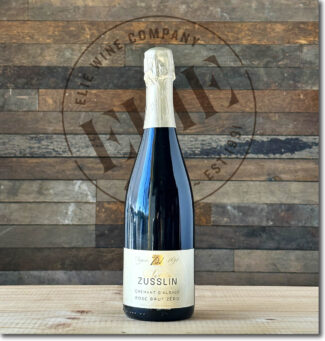 •3• Domaine Valentin Zusslin, nv Crémant d’Alsace Rosé Brut Zero ‘Natural’ ($39)
•3• Domaine Valentin Zusslin, nv Crémant d’Alsace Rosé Brut Zero ‘Natural’ ($39)
Another perfectly dry Brut Zero, and since it is forbidden for Crémant producers to blend red and white grapes to make rosé, this one is 100% Bollenberg Pinot Noir, created and bottled without sulfites. It is an elegant saignée rosé, with red berry aromas on the nose, intense fruit-skin intensity and a striking mineral profile to the finish.
Vintage Journal
2020
The 2020 growing season began with an unusually warm spring, which saw both an early budburst and flowering. The summer quickly picked up steam, but little rain—extremely hot conditions made drought a serious issue in some vineyards, as the delicate nature of Alsace white grapes means they are particularly sensitive to heat stress. There was enough intermittent rainfall to prevent the grapes from becoming completely parched, although the high temperatures inevitably sped up the growing season prompting an early harvest. Picking began in early autumn during a heatwave, which meant pickers had to be careful grapes were brought in under suitably cool conditions. Overall, despite the problems with drought, the harvest produced grapes in good condition, with their essential aromatics and acidities preserved.
2019
Overall, the 2019 vintage in Alsace was very good. Chilly spells during the spring were accompanied by the typical seasonal frosts in April. Temperatures began to warm up in May and hot weather in June and July eliminated both rot and mildew. Rain fell in August relieving the vines from drought and the good conditions continued for the September harvest. These conditions are ideal for offering grapes to develop concentration and depth without suffering drought-related stress.
2018
The first half of 2018 was characterized by unusually high rainfall which allowed the soils to build important reserves for the upcoming summer months. Surprisingly, despite the heavy rains, flowering was not only successful but arrived earlier than normal. A warm, dry summer saw temperatures spike in July, making the few light rains that fell in August quite welcome. Although the grapes tended to ripen more quickly than normal, the harvest still occurred at a leisurely pace over two months. All the whites delivered impressively, particularly wines made from Gewürztraminer, Muscat, Pinot Blanc and Sylvaner. However, Pinot Gris generally stole the show with beautifully rich, aromatic wines. Riesling was perhaps the trickiest, less suited to the warmer temperatures, but October’s warm days and cool nights helped the grapes to ripen while retaining their acidity, creating superlative Vendanges Tardives.
Notebook …
The Sugar Question: Sec Means Sec
“We’re not in favor of the change, especially for Riesling,” says Emanuelle Gallis of leading Alsace cooperative Cave de Turckheim. “But in the end, it’s not a catastrophe. It’s only one word—just another rule on top of all the others.”
That word is ‘sec’, meaning ‘dry’—a word which Alsace producers have been obliged to carry on the label of their dry wines since the 2016 vintage. This is the Association of Alsace Producers’ interpretation of a European Union law stipulating that one of four levels of sweetness should be carried on labels: sec, demi-sec, moelleux and doux; the AVA was concerned that consumers were turning away from Alsace wines because they were afraid of buying an off-dry or sweet wine when they wanted a dry one. “This has become particularly clear in Parisian brasseries,” says AVA president Jérôme Bauer, “where Alsace Rieslings are getting rarer.”
As a result of the new rule, dry Alsace wines must be labeled ‘sec’ if they have maximum four grams of residual sugar per liter—an INAO rule that had previously applied to all other French wine regions beside Alsace. Although it seems like a logical decision, it has not been embraced willingly by all producers, some of whom feel it is misguided, as the default style of Alsace whites is mineral dryness rather than sweetness.
- - -
Posted on 2023.03.01 in Crémant d'Alsace, France, Wine-Aid Packages, Alsace | Read more...
Clarification of The Possibilities of Pinot Noir in Burgundy. Domaine du Pavillon Articulates The Case Throughout Côte de Beaune’s Appellations with Vintage 2020
So well does Pinot Noir align with its terroir that it is no stretch to claim that the Burgundian earth itself was mute before the first plantings. But the truth is, fickle Pinot Noir has found its spiritual home here only through centuries of trial, error and site selection along with the endless pruning required to allow the grape its most expressive stage. In truth, there are many grapes that are easier to grow in Burgundy, are subject to fewer diseases, are easier to maintain and which produce a more consistent and copious yield. The problem? They aren’t Pinot Noir.
Domaine du Pavillon, one of the Albert Bichot constellations of excellent estates, has produced a variety of Côte de Beaune Pinot-based wines that articulate not only the heritage that has permitted this red wine grape to maintain a crowning place in the varietal hierarchy for centuries, but points to the stylistic changes that might be inevitable as part of the future new normal.
Throughout Burgundy, grapes have been regularly gaining ripeness and palate-sweetness unheard of even 20 years ago, while green, unpleasant tannins that refuse to soften or ripen with age are nearly a thing of the past. For all the horror stories (and none should be downplayed, of course) climate change has had an odd effect in Burgundy. Contemporary wines may be more seductive and charming when young, but are also likely to age well, as these outstanding selections for Domaine du Pavillon prove.
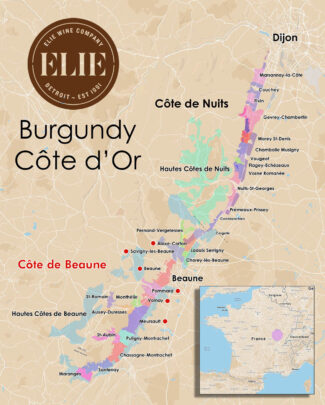
Burgundy: Land of Climats
Nowhere has an obsession with the minutia that connects wine to earth been pushed as far (and in such an elaborate manner) as in Burgundy. And nobody else has coined a term that more adequately describes this compartmentalized vineyard structure: ‘Climat.’ Carefully defined for centuries, and having remained virtually unchanged to the current day, a ‘climat’ is a parcel of vines which has its own name, its own history, its unique taste and place in the lexicon of wines. More than a thousand of them are inscribed on the UNESCO World Heritage List.
This is not to give a lower profile to the hundreds of communes and villages throughout Burgundy that also place a premium on self-expression. One of the great joys of the Burgundian experience is to explore each appellation and learn to distinguish identifying characteristics, from the most broad to the most nuanced.
Pinotism Reigns
For all the drawbacks inherent in the work-intensive, thin-skinned, low-yielding Pinot Noir variety, the end result is a wine that announces its place of origin louder than nearly any other. When coddled and protected, Pinot responds by mirroring the subsoil in which it is rooted, the slope of the land as it drains and the absorption of sunlight—in short, its microclimate. Referred to as ‘an infinite sensory experience’, Pinot Noir offers a wide variety of aromas when young, from fresh berries to spicy pepper and cinnamon, often underscored with coffee and smoky notes. Over time, the fresh fruit flavors will transform into mature notes of jam or kirsch, and the wine will develop exquisite aromas of wild mushroom or truffle accompanied by feral notes like leather or fur.
As an interesting historical side note, following the Black Plague (1349) many neglected Pinot vineyards were replanted to Gamay, which was not only more disease resistant, but produced more wine. The re-crowning of Pinot did not happen for more than a century (and over the objections of wine merchants who preferred the easy profits generated by copious and inexpensive Gamay); it required edicts from noblemen, including Duke Philippe le Hardi, who declared that Gamay was ‘most harmful to every human creature to such an extent that those who use it are subject to serious illnesses.’
Vintage 2020: Voluptuous and Structured
François Labet, a négociant whose family has lived in Beaune for 300 years, summarizes the 2020 vintage like this: “An intellectually-challenging vintage; the reds in particular defy easy categorization because the impact of that season varied considerably by terroir. Producers had key decisions to make, especially when to pick and that significantly affected both the style and quality of the resulting wines.
And this is because the most notable feature of this vintage was its early and rapid harvest: Many domains began picking the week of August 17th and while August harvests have been frequent in the 21st century (there were none in the prior century), this was for many domains the first time they had not only started, but completed a harvest before the end of August.
The resulting wines (particularly from earlier harvests where sugars were high and acids intact) are remarkable, both for whites and reds. The season was hot and dry, but water tables were healthy from the mild and wet preceding winter.
Beaune was particularly fortunate and Chef de Cave Frédéric Weber (Bouchard Père et Fils) describes 2020 as a concentrated and strong vintage: “It reminds me of 2016 for its vibrancy and energy; the wines are voluptuous and structured. A great vintage for the future, like the ‘18s.”
Vintage 2019: Concentrated and Vibrant
Of the bullseye vintage of 2019, Dimitri Bazas of Maison Champy in Beaune, says, “If you offer me a contract for 30 years and it promises that every year will be like 2019, I will say, where do I sign?”
In the season before the pandemic, a new phenomenon was beginning to take hold in Burgundy and growers were baffled: The 2019 vintage, largely from a drought year, showed previously unseen levels of both ripeness and acidity, producing a baffling combination of searing freshness, perfect ripeness and crystalline purity. After a blustery February and a wet March, well-forecasted frost hit in April, but after that, things heated up and stayed blisteringly hot through the beginning of September, when it cooled down and allowed the grapes on the vine to maintain good acids.
Côte de Beaune’s Benjamin Leroux maintains, “2019 is a great vintage, with quality to be found across the region and at every level. There are, naturally, different styles of wine, and some growers and areas have been more successful than others, but there should be something to appeal to all budgets and palates. In an uncertain world, the ’19 vintage offers reassurance: you can buy it with confidence.”
Domaine du Pavillon
The Essence of Côte de Beaune
Located south of Pommard, the Côte de Beaune’s Domaine du Pavillon is under the vinous umbrella of the Bichot family, who settled in Burgundy in 1350. Albéric Bichot took over management in 1996, and although he fully respects traditions, he remains focused on the future, comparing himself to the ‘conductor of an orchestra, proud to bring people and their talents together over a common project.’
Among those common projects is Domaine du Pavillon, whose 37 acres of vines include just under ten acres of Bichot’s Pommard monopole ‘Clos des Ursulines’.
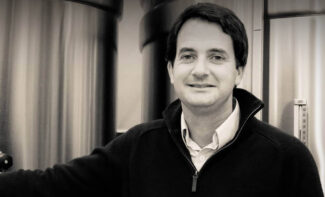
Matthieu Mangenot
Meanwhile, among the talented people he has brought together is head winemaker Matthieu Mangenot who brings to Beaune a wealth of experience from estates in South Africa, Lebanon and Bordeaux. After his first experience in the Mâconnais/Beaujolais region, he joined Albert Bichot in 2007 as manager of Domaine Long-Depaquit in Chablis. His dual training as an agronomist and an oenologist allows him a comprehensive approach to winemaking, from vineyard management to bottling. His knowledge of soil formations and his pragmatic, transversal approach benefit the development of the House’s productions and pair well with its concern for authenticity and sustainability. “The wines of the Pavillon will bear the certified ‘organic wine’ label starting with vintage 2018,” he promises.
Viticulture is handled by Christophe Chauvel, assisted by Dominique Bon. Chauvel arrived in Burgundy in 1982 to study at Beaune’s viticultural secondary school, and after gaining experience under Sommelier Jean-Luc Pouteau at the restaurant Pavillon Elysée Lenôtre in Paris, he decided to go back to school to follow a 4-year winemaking program in Bordeaux. He joined the Albert Bichot estates in 1999.
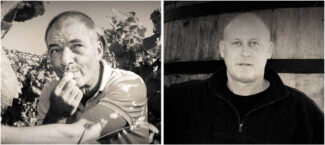
Christophe Chauvel, left, Dominique Bon, right
Dominique Bon became interested in viticulture as a young boy. After 3 years of studies at Beaune’s viticultural secondary school, he was made manager at an estate in Meursault, in charge of clients’ vines (and vinification) for 13 years. On the side, he took over a small, six-acre estate which he still looks after. He joined Albert Bichot in 2000 as vineyard manager at Domaine du Pavillon where his knowledge of vines and specificities of the local terroirs are precious assets.
Work In The Vineyard
The twin motivators of respect for nature and respect for the planet are the cornerstone of Domaine du Pavillon’s approach to the craft. Sustainable viticulture is the watchword, based on observation, prevention and paying attention to the complex balances found in nature. Pavillon soil is maintained responsibly, judiciously ploughed and fertilized using only organic matter. In the field, hands-on labor boosts the plants’ natural defenses and dedicated teams know every nuance of the terroir perfectly and remain attentive to the development of the vines as they grow.
At The Winery and In The Cellar
‘As little intervention as possible’ animates Pavillon’s vinification process in each of Burgundy’s major viticultural regions from which they pull their grapes. The wines are always transferred from vinification vats or barrels to the cellars by gravity—the gentlest, most earth-friendly method. There it is allowed to mature in casks for 12 to 18 months in barrels, some new, some used. It is during this key period, when time and expertise come together, that wines first begin to reveal their personality and hint at their potential. Depending on the vintage, combinations of oak from different origins (Tronçais, Allier, etc.) and of varying degrees of toast are used to impart discrete yet complex nuance to the finished product.
Meursault
There’s a rumor that Meursault’s name (derived from the Roman ‘muris saltus’, or mouse-leap) is meant to measure the distance between Pinot Noir acres and Chardonnay acres within the appellation. Alas, it’s an apocryphal tale—it actually refers to the Ruisseau des Cloux stream, which the centurions were able to easily get across.
Sitting at the entrance to the Saint-Romain valley—a gap in the Côte d’Or—the commune of Meursault stretches for three miles from north to south, making it about twice as large as Puligny. Most of the vineyards are located on the slopes of the Côte d’Or escarpment and are blessed with classic Burgundian limestone and marl soils. The vines are planted in a variety of orientations in the local hillsides, due south through due east, and such differences become one of many contributing factor to the variation of styles in Meursault wines.
Meursault contains 714 acres of Village-level vineyards and 259 acres of Premier Cru sites; more than 200,000 cases of white wine are produced per year, plus around 4000 cases of red wine.

 Domaine du Pavillon, 2020 Meursault ($55) Red
Domaine du Pavillon, 2020 Meursault ($55) Red
From a 0.8 acre site of 40 year old vines located just north of the village of Meursault, where exposure is east/southeast and the soil is marly clay. Hand-picked, the Pinot Noir is crushed, then put in temperature-controlled conical oak vats for four weeks and aged in oak for 14 -16 months, 20% new. The wine displays a delicate nose of crushed cherries and rose petals with a touch of coffee and elegant tannins on the finish. 2000 bottles made.
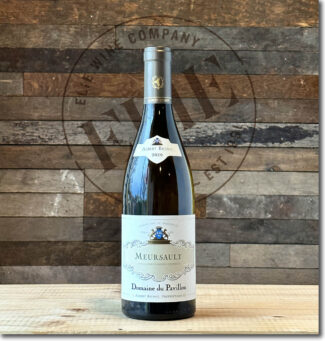 Domaine du Pavillon, 2020 Meursault ($99) White
Domaine du Pavillon, 2020 Meursault ($99) White
Drawn from 5 plots totaling 5.6 acres of 30-year-old vines grown on white marly limestone and clay. The wine is vatted in 30% new oak, then aged in oak for another 12 – 15 months. It reveals a nose of yellow peach, vanilla and toasted almond, round in the mouth with elegance and length and a crisp, mineral finish. 15,000 bottles made.
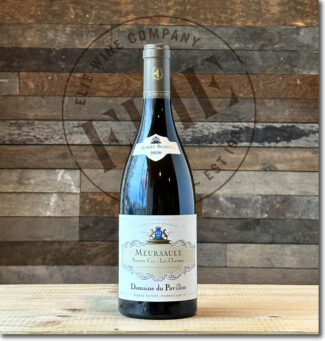 Domaine du Pavillon, 2020 Meursault Premier Cru Les Charmes ($153) White
Domaine du Pavillon, 2020 Meursault Premier Cru Les Charmes ($153) White
From a 2.89 acre plot, mostly from the upper portion of the Les Charmes lieu-dit called ‘Charmes du Dessus.’ Exposure is east/southeast on gentle slope at an average elevation of 800 feet. The soil is calcareous clay and the vines are around thirty years old. The juice is vatted in oak, about 60% new, then aged in oak for about 15 months, 25% new. The wine features aromas of candied lemon, toasted almond, white flowers and freshly baked bread; palate is smooth and velvety without heaviness and mirrors the bouquet’s aromas. 7,500 bottles made.
 Domaine du Pavillon, 2019 Meursault Premier Cru Les Charmes ($153) White
Domaine du Pavillon, 2019 Meursault Premier Cru Les Charmes ($153) White
Les Charmes is among a cluster of top climats, with Genevrières on the northern border and Perrières above it on the slopes. Charmes Premier Cru wines tend to be vibrant and honeyed with rich, nutty characters and floral overtones. A large and diverse area, this particular cuvée is a blend of primarily Dessus (the upper part of the vineyard) and a lesser amount of the lower portion, called Dessous. The wine is laced with peach, lemon cake and sweet spice aromas along with acacia and spice and bright acidity adding lift. 7,500 bottles made.
Volnay
No red wine appellation is more synonymous with ‘perfume’ than Volnay; the wines have historically checked all the boxes for quality, vigor and longevity but with an aromatic delicacy traditionally referred to as ‘feminine.’ The appellation has existed since 1937, and is reserved for Pinot Noir-based red wines exclusively. Although the region contains no Grand Crus, more than half of the vineyards covered by Volnay’s 526 acres are rated as Volnay Premier Crus. Just across the boundary that delimits Meursault, Volnay-Santenots is grown on terroir better suited to Pinot Noir than Meursault’s legendary Chardonnay.
The appellation stretches across a narrow band of oolitic limestone on the hill of Chaignot, with vineyards facing south-east. At the top of the slope, the soil is pink in color with pale green inclusions overlain by schist. As the ground descends, white, chalky-textured argovien limestone takes over, with a third layer of reddish Bathonien limestone finally giving way to deep gravel soils at the foot of Chaignot.
These varied soils combine to give relatively small Volnay a remarkable number of recognized lieux-dits (24) and climats classified as Premier Cru (34), each unique in expression, but yoked by an inimitable Volnay style: Spicy fragrance, elegant structure and silken mouthfeel, qualities that transcend producers, both of the traditional old guard and the innovative new.
 Domaine du Pavillon, 2020 Volnay Premier Cru Les Santenots ($99) Red
Domaine du Pavillon, 2020 Volnay Premier Cru Les Santenots ($99) Red
‘Les Santenots’, a Volnay Premier Cru, is actually located in Meursault, just to the south of Volnay. Though best known for its white wines, certain Meursault terroirs (such as Les Santenots) are better adapted to bringing out the finesse of Pinot Noir rather than Chardonnay. From a 0.7-acre climat, the soil is brown calcareous clay, the vines are 30 – 40 years old and vatting is done in temperature-controlled conical oak vats for 20 to 28 days, then aged in 35% new oak. The wine encapsulates the elegance and purity for which Les Santenots is known; aromas of red currant, dried rose petals and cinnamon with silken tannins and a chewy finish. 1500 bottles made.
Pommard
If Burgundy is a volume of poetry, Pommard might be thought of as its Alfred, Lord Tennyson, offering power and rich structure, a charge of the Light Brigade, only with a substantially safer outcome. Pommard is the beginning of serious Pinot Noir in Burgundy; nothing else is grown and nothing else allowed besides (perhaps inexplicably) a few vineyards of the Lemberger/ Sankt-Laurent cross ‘André.’ Aptly named for Pomona, the Roman god of fruit trees, Pommard’s most muscular wines hail from its mid-slope Premier Cru vineyards which run in a nearly uninterrupted from the commune boundaries of Beaune in the north to Volnay in the south. Even that may belie the quality of these wines; most experts believe that the Les Epenotes and Les Rugiens Premier Crus should be promoted to join Corton in its Grand Cru status. Once in line for this prestigious upgrade, the vignerons of the time were wary of the restrictive Grand Cru production laws and declined the offer.
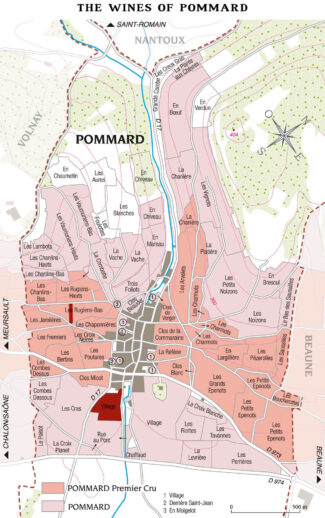
 Domaine du Pavillon, 2020 Pommard ‘Clos des Ursulines’ Monopole ($77) Red
Domaine du Pavillon, 2020 Pommard ‘Clos des Ursulines’ Monopole ($77) Red
‘Clos des Ursulines’ is a peaceful haven dotted with centuries-old pine trees and named for the Ursuline nuns that were the first owners of the estate. The ten-acre vineyard is now owned entirely by the domain—hence, the designation ‘monopole.’ It at the southern end of the Pommard appellation, toward Volnay, where the soil consists of calcareous clay with white marls; the vines are 40 years old. After spending four weeks in conical oak vats, the wine is aged on oak for another 16 months and showcases the rich fruit of Pommard; black cherry, cassis and fig. Given time, these notes will evolve toward coffee and leather. 18,000 bottles made.
 Domaine du Pavillon, 2020 Pommard Premier Cru Les Rugiens ($169) Red
Domaine du Pavillon, 2020 Pommard Premier Cru Les Rugiens ($169) Red
Rugiens is one of Pommard’s most highly-prized vineyards, considered by many to be worthy of Grand Cru status. The wines are full-bodied and brooding with smoky, spicy aromas capable of improving for many years. Pavillon’s offering is from an 0.8-acre parcel just south of Pommard, in the Rugiens Bas, or lower slope where the soils are brown/red clay containing hard limestone. The wine shows great energy and precision with virile, concentrated notes of cherry compote and raspberry syrup that evolve into pepper, licorice and eucalyptus behind soft, integrated tannins. 1600 bottles made.
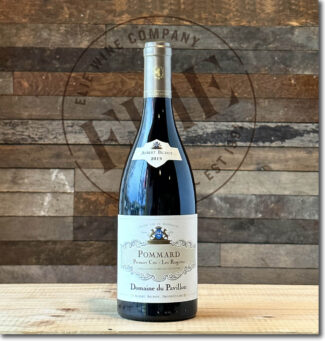 Domaine du Pavillon, 2019 Pommard Premier Cru Les Rugiens ($171) Red
Domaine du Pavillon, 2019 Pommard Premier Cru Les Rugiens ($171) Red
The muscular structure of Rugiens wine is often attributed to the rich iron content of the soil, evident in its reddish color which also lends the climat its name. This rocky, calcareous soil covers hard limestone bedrock and provides good drainage, so vines have to work hard to find nutrients and hydration; this helps to curb both vigor and yield. Small, high-quality berries make concentrated wines: Here, the juice is allowed to ferment for up to 28 days, then is aged in 30% new oak barrels for 18 months. The wine’s brilliant, high-toned bouquet of black fruits and herb-rubbed grilled meat display earthiness beneath a compact ultra-ripe core. The silky texture continues through the finish. 1600 bottles made.
Beaune
The historical capital of Burgundy, Beaune eponymous appellation includes 42 Premier Cru Climats producing primarily red wine (887 acres of Pinot to Chardonnay’s 143. Village-level wines can be somewhat homogeneous, although from the northern end of the commune they tend to be intense while those from the southern end are smoother and fuller.
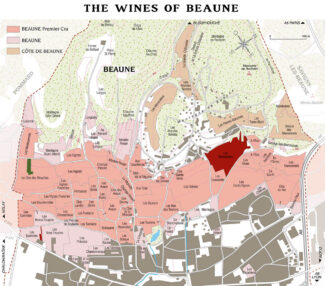
Beaune’s slopes are quite steep and the soil is thin; a breakdown of the terroir is a mouthful and a half: On the lower slopes are Argovian marls and deep soils, white, grey or yellow, tinged with red from the iron in the Oxfordian limestone. Exposures are easterly to due south at altitudes between 700 and a thousand feet.
 Domaine du Pavillon, 2020 Beaune ‘Les Epenottes’ ($55) Red
Domaine du Pavillon, 2020 Beaune ‘Les Epenottes’ ($55) Red
Epenottes lies in the southern part of the appellation, on the edge of Pommard. It is terroir is similar in to Pommard, but the wines have a more delicate touch, with finer structure and subtle silkiness. The vineyard name is derived from the word ‘épine’ for thorn, and designates a place where a variety of thorny trees, shrubs and bushes once grew. From a 1.5 acre southeast-facing site, the wine shows candied cherry, blackberry and cassis with toasted hazelnuts and chocolate. The palate is generous and structured and finishes with notes of violet and licorice. 3600 bottles made.
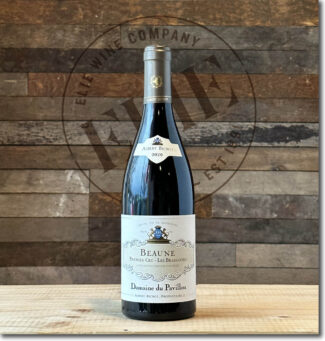 Domaine du Pavillon, 2020 Beaune Premier Cru Les Bressandes ($83) Red
Domaine du Pavillon, 2020 Beaune Premier Cru Les Bressandes ($83) Red
Among the best-known climats of Beaune is ‘Les Bressandes’, located a quarter mile from Aloxe-Corton. The property’s northeast end borders the commune of Ladoix-Serrigny and, by its shallow, rocky clay-limestone soil, is able emphasizes the most elegant turn of Pinot Noir’s profile, at times imparting a unique chalky character. Like Epenottes, the vineyard gets its name from the flora—the bresse, or brush—which grew here before grapes. The vines are between 30 and 40 years old, grown on clay-limestone soil with a relatively sandy texture. The wine is high-toned with bright pomegranate flecked with mineral and saline notes. Tannins are powdery and the finish mineral-filled.
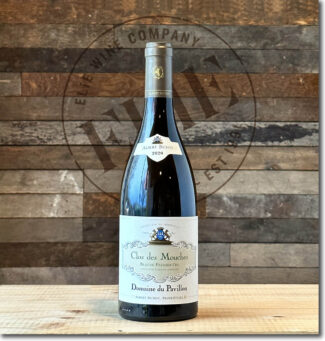 Domaine du Pavillon, 2020 Beaune Premier Cru Clos des Mouches ($153) White
Domaine du Pavillon, 2020 Beaune Premier Cru Clos des Mouches ($153) White
Le Clos des Mouches is one of Beaune’s most highly respected Premier Cru vineyards, planted to both Chardonnay and Pinot Noir. Several of Burgundy’s top domains and négociants own parcels within the 60-acre property, although Drouhin owns more than half. Pavillon owns a bit more than an acre in the upper part of the clos, where altitudes are more than nine hundred feet on marly limestone. The wine was vatted for two months and then placed in oak for 12-115 months. The wine shows a complex floral nose—white lilac and white rose—leading to fruit aromas, especially green apple and mango which evolves towards hazelnut and almond. Allowed to mature, the wine will show and elegant mesh of white truffle, citron, honey and nutmeg. 4900 bottles made.
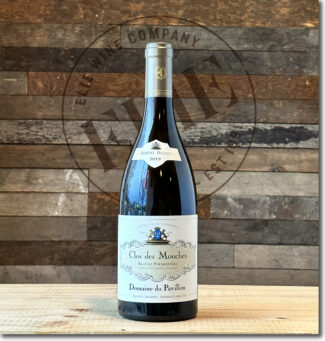 Domaine du Pavillon, 2019 Beaune Premier Cru Clos des Mouches ($171) White
Domaine du Pavillon, 2019 Beaune Premier Cru Clos des Mouches ($171) White
Des Mouches sits at the very southern end of the commune, at the boundary with neighboring Pommard. The equally well-regarded Les Montrevenots vineyard lies above and to the northwest. The clos sits mid-slope of the Montagne-Saint-Desire hill facing southeast, exposing its vines to direct sunshine throughout the morning and into the afternoon, an aspect that allows it to dodge the hotter, harsher sunshine of later afternoon, and permits the grapes to ripen slowly and steadily throughout the growing season. An extra year of aging has imbued this wine with cooked apple and lemon-curd aromas around a buttery mid-palate that also shows hints of lychee, jasmine tea and tangerine peel.
Savigny-lès-Beaune
Chances are, you love wines from the Rhine and are passionate about wines from the Rhône, but at first glance, ‘wines of the Rhoin’ may look like a typo. In fact, this small river flows from the cliffs of Bouilland through the commune of Savigny-lès-Beaune, and alluvia from the overflow adds fertility to the lower slopes of the hills of Beaune. With nearly nine hundred acres of vineyard, the appellation is one of Burgundy’s largest.
Savigny’s terroir features a gentle gradient that becomes steeper as the altitudes approach 1300 feet, where the geology is similar to that of the great Grand Cru hill of Corton. Favored exposures face the south, where the soils are gravelly and scattered with oolitic ironstone. Near the river valley, the red-brown limestone becomes more clayey and pebbly, while the east-facing slopes consist of sand and limestone.
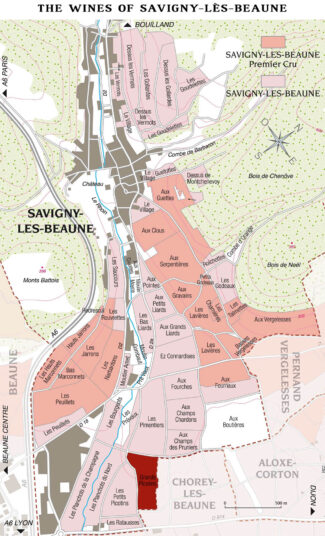
As rich in history as it is in Premier Cru vineyards (there are 22), Savigny-lès-Beaune was once a social hub where the nobility and clergy rubbed shoulders, and the near mythical regard for the quality of its wine is reflected in a stone carving on a Savigny château: “The wines of Savigny are nourishing, theological and keep death at bay.”
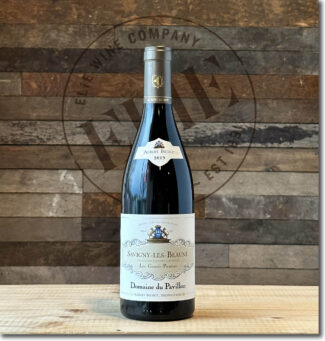 Domaine du Pavillon, 2019 Savigny-lès-Beaune ‘Les Grands Picotins’ ($58) Red
Domaine du Pavillon, 2019 Savigny-lès-Beaune ‘Les Grands Picotins’ ($58) Red
In the patois of the time, ‘faire leurs picotins’ was a parcel used by horses to rest and sleep. The terroir, according to Pavillon, is strongly influenced by the combes (valleys) of Savigny-lès-Beaune and Pernand-Vergelesses. The soils are gravel and calcareous clay; the wine is fermented for 25 days and aged in oak, 20% new, for 12 – 15 months. It shows a perfumed bouquet reminiscent of rose petals with hints of cranberry and bergamot; the medium-bodied palate displays tart red cherries, crushed strawberry and light orange zest with acidity lending bite at the finish.
Aloxe-Corton
The appellation of Aloxe-Corton stands guard near vinous gates of the Grand Crus of Corton and Corton-Charlemagne, enjoying (if not the prestige) many similar growing conditions, producing almost exclusively red wines known for both a depth of color and an intensity of flavor. With vines facing east, the terroir is soil driven, with flint and limestone rich in potassium and phosphoric acid lending supple firmness to the wines, especially those from the appellation’s southern end.
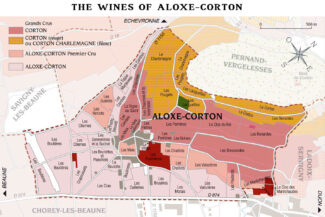
Whereas white wines from the region exist, they are rare. The deep soils are better suited for Pinot Noir; the terroir is a geological cradle for this prima donna varietal. At altitudes averaging 800, the vineyards are planted in reddish earth with flint and limestone debris known locally as ‘chaillots’ mixed in, and likewise rich in potassium and phosphoric acid. Such soils favor supple, highly-bred wines, while clay and marl breeds firmness and complexity. Anticipate wild berry notes that intensify with age and evolve into peony and jasmine, brandied fruits, pistachio, prune and truffle.
 Domaine du Pavillon, 2020 Aloxe-Corton ($69) Red
Domaine du Pavillon, 2020 Aloxe-Corton ($69) Red
From the south end of Aloxe-Corton; the unlovely-sounding ‘Crapousuets’ is actually a one-acre lieu-dit that produces deeply serious Pinot Noir: This one shows a dark, ferrous nose with spiced cherry and cassis notes behind sweet damson and ripe, soft tannins. 3000 bottles made
 Domaine du Pavillon, 2020 Aloxe-Corton Premier Cru Les Fournières ($93) Red
Domaine du Pavillon, 2020 Aloxe-Corton Premier Cru Les Fournières ($93) Red
From another one-acre plot on the eastern fringe of Aloxe-Corton at the base of the Corton hill, with some vines creeping up the lower slope. These 40-year-old vines are planted on scree overlying limestone. The name comes from the practice of clearing parcels by a burn-out process in stoves where the dried clods of kindling are called ‘fournières.’ The wine offers up a vibrant nose of ripe cherries and quintessential Corton spices with an appropriate touch of bonfire and supple tannins.
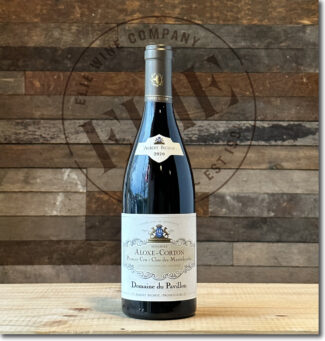 Domaine du Pavillon, 2020 Aloxe-Corton Premier Cru Clos des Maréchaudes Monopole ($93) Red
Domaine du Pavillon, 2020 Aloxe-Corton Premier Cru Clos des Maréchaudes Monopole ($93) Red
Clos des Maréchaudes is a 3.4 acre walled vineyard located on the lower slopes of the Corton hill, only partly in the commune of Aloxe-Corton and straddling the border of Ladoix-Serrigny, owned entirely by Maison Bichot under the Pavillon title. It is but one of multiple designations within the wider Les Maréchaudes vineyard—the top two-thirds of the site have Grand Cru status as ‘Corton Les Maréchaudes.’ Several Premier Cru designations cover the lower third. The wine is an earthy cornucopia of forest berries, loam, kirsch and the supporting structure to reward a decade or more of aging.
 Domaine du Pavillon, 2019 Aloxe-Corton Premier Cru Clos des Maréchaudes Monopole ($103) Red
Domaine du Pavillon, 2019 Aloxe-Corton Premier Cru Clos des Maréchaudes Monopole ($103) Red
Like its illustrious neighbor, the equally-illustrious Corton Grand Cru Monopole, Clos des Maréchaudes belongs to the Domaine du Pavillon estate. The soil here is brown limestone overlying scree with a high proportion of clay. The name is derived from the Old French term ‘maresche’, meaning ‘marsh’—the lower parts of Aloxe-Corton and Ladoix-Serrigny were once wetlands due to their proximity to the Lauve spring and major drainage was required to make the land suitable for viticulture. Dried cherries and cranberry on the nose with understory of rich leather, forest floor, earth and eucalyptus and a long, mineral-focused finish.
Grand Crus in Aloxe-Corton
The hill of Corton lies in the midst of a cluster of famous wine-growing villages—Ladoix-Serrigny, Aloxe-Corton, Pernand-Vergelesses and Savigny-lès-Beaune. ‘Corton’ is the largest Grand Cru vineyard in Burgundy, and one of only two where wines are made from both Pinot Noir and Chardonnay—the other being Musigny. The geomorphology is a main factor in the breathtaking quality of these wines; the vineyards lie at heights of 820 – 1100 feet, forming a geographical amphitheater not found elsewhere in the Côte. Corton Grand Cru received its AOP status in 1937 and only the red wines have the right to add the name of their climat to that of the appellation.
Corton-Charlemagne occupies the highest portion of the Corton hill, where the slopes are steep, with grades up to 23%. The hill itself offers an exemplary geological cross-section through the younger Jurassic strata that lie between Ladoix-Serrigny and Meursault. The color of the clay-rich marly soils varies from yellow to ochre to brown, and limestone alternates with marls beneath a thin cover of rendzinas—humus-rich, shallow soil formed from carbonate or sulfate-rich parent material. It is ideal conditions for Chardonnay rather than Pinot Noir, which is why Corton-Charlemagne produces white wine exclusively. At mid-slope the red wines of the Corton appellation grow on soils that are appreciably different in character.
 Domaine du Pavillon, 2020 Corton ‘Clos des Maréchaudes’ Monopole Grand Cru ($169) Red
Domaine du Pavillon, 2020 Corton ‘Clos des Maréchaudes’ Monopole Grand Cru ($169) Red
This wine comes from Domaine du Pavillon monopole with the rare distinction of possessing two different levels of appellation within the same five acre vineyard. The 1.3 acre Grand Cru lieu-dit features the sunniest portion of the vineyard. Wonderfully ripe, with concentrated berry notes along with the feral muscle that Corton develops. Dark, proportionate and dense with stones and smoke alongside cherry jam and anise. 2500 bottles made.
 Domaine du Pavillon, 2019 Corton ‘Clos des Maréchaudes’ Monopole Grand Cru ($189) Red
Domaine du Pavillon, 2019 Corton ‘Clos des Maréchaudes’ Monopole Grand Cru ($189) Red
The Grand Cru portion of the vineyard yields wines of greater concentration than those from the top of the terrace where there is a bit more clay. The appreciable increase in quality is revealed in greater density, better structure, more length and extensive depth to the fruit character. This wine is a poster child for the phenomenon with a drinking window that should last until 2039.
 Domaine du Pavillon, 2020 Corton-Charlemagne Grand Cru ($289) White
Domaine du Pavillon, 2020 Corton-Charlemagne Grand Cru ($289) White
Located in the ‘Les Languettes’ climat on the south/southeast side of the Corton hill, the plot once belonged to the nuns of the Lieu-Dieu Abbey and was nicknamed ‘Vigne Dieu’ by the old wine merchants of Aloxe-Corton. The terroir is brown soil overlying Argovian marls and oolitic limestone, perfect for Chardonnay, whose position on the slope is a showcase for finesse, delicacy and purity. The wine presents aromas of hazelnut, verbena and buttery honeyed toast with deep baked-apple savoriness and a solid spine of acidity. 7000 bottles made
Notebook …
Climate Change is Taking Root
In 2023, melting glaciers and persistent droughts are spreading, and not at a glacial pace. All areas of agriculture are being impacted, and far more quickly that science had predicted. For farmers who grow wine grapes, the effects have impacted the soil, the roots of the vines and the yields of crops. For France, this has been particularly devastating—in 2021, France recorded its smallest harvest since 1957 and lost more than $2 billion in sales; a huge blow to the country’s second-largest export industry.
In France overall (and in Burgundy in particular), terroir is the heart and soul of wine expression, and terroir encompasses all the factors that go into producing the grapes, from subsoil to elevation. And climate plays a vital role in terroir, so when climates change, so do the very underpinnings of an ideology.
Classic Burgundian wines are known for finesse, alacrity and pristine fruit, something that can in part be attributed to grapes cultivated in cooler climates. The expression of Burgundy’s top wines has already begun to change, and when acidity remains brilliant through heat waves rather than something to tame during chilly autumns, the very essence of the appellation is mutating. This has advantages as well as disadvantages, of course, based on where your vineyard is, but it seems clear that if nothing else, Burgundy’s historic hierarchy may not survive intact.
- - -
Posted on 2023.02.18 in Beaune, Meursault, Côte de Beaune, Savigny-lès-Beaune, Aloxe-Corton, Côte de Beaune, Pommard, Volnay, France, Burgundy | Read more...
Gamay and Sauvignon Blanc’s Strong Presence in Touraine, the Heart of Loire Valley, And Rightfully So. Four Producers Represented in 9-Bottle Pack ($259), 5 Red And 4 White
John Updike refers to the French as ‘that strange race, neither northern nor southern, both sensual and ascetic, the epitome in turn of chivalry and the bourgeoisie.’
Updike, a prolific writer of fiction, poetry, non-fiction and art/literary reviews, never got a chance to weigh in on Touraine which—like him—wants to be everything to everybody.
Under The Radar
Sitting east of Vouvray, frenetic Touraine produces red wine, white wine, pink wine and sparkling wine; regulation permits Cab Franc, Malbec, Pinot Noir, Cabernet Sauvignon and Gamay for the reds while the list of allowable whites includes Chardonnay, Chenin Blanc and Sauvignon Blanc (making up 43% of the plantings in 12,350 acres of designated vineyards). There is also an interesting local variety called Menu Pineau and also a sharp focus on single-varietal bottlings, allowing a showcase for the unique contours these familiar grapes adopt in Touraine terroir.
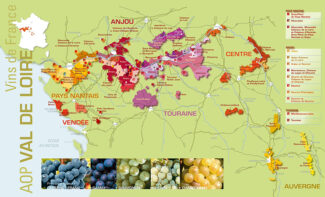
Of course, some Touraine wines are good, not great, but rest assured that the photo ops are great, not good: Many of the Loire’s most admired and picturesque grand châteaux dot the Touraine countryside.
From this near-fairy tale setting, we have winnowed some superb examples of Gamay and Sauvignon created by the region’s top producers; vignerons who put a strong emphasis on varietal character and terroir expression generally unencumbered by oak. These are excellent choices for either sipping or supper; they are low in alcohol and pair especially well with the sumptuous rillettes and rillons of Touraine. The package is comprised of 9 different bottles (5 red and 4 white wines) for $259.
About Touraine, The Heart of The Loire
Most people are more familiar with the Loire’s bookends, Muscadet and Sancerre. But between them lie 79 AOPs representing what InterLoire (the official organization of producers, merchants and traders involved in the production and promotion of Loire wines) calls, “The most extensive, diversified and original vineyard in Europe.”
The AOP covering Touraine stretches from Anjou to the west to the Sologne in the east, converging near the point where the Loire River and its tributaries meet. It covers 104 communes in Indre-et-Loire and 42 in Loir-et-Cher.
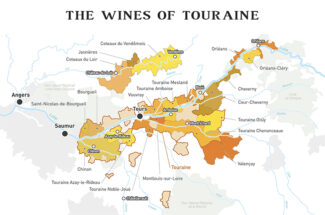
Most of the vineyards are located southeast of Tours on the slopes that dominate the Cher River and the land between the Cher and the Loire. With nearly 13,000 acres under vine, the climate varies dramatically as you move inland; oceanic conditions dominate the west, becoming more continental as you move east. These climatic differences combined with varied soils determine the choice of grape variety planted (with later-ripening varieties grown in the west and earlier-ripening ones in the east) and account for the wide variety of wine styles produced.
Terroir is as diverse as the climate, another key factor in fitting vine to site. Broadly ranging from chalky tuffeau to flinty-clay shot through with sand and gravels from eons of deposits from the Loire, even the same grape will display markedly different profiles depending on where it is planted. Nearly all the favored grapes are cool climate varieties and the wines tend to show vibrant acidity and delicate, clean, precise flavors.
Gamay & Sauvignon’s Strong Presence in Touraine
Ever since Philippe de Bourgogne cast Gamay from the bosom of Burgundy six centuries ago, the variety has been derided and even despised outside its spiritual home, Beaujolais. Folks who were soured by the sweet and fruity Nouveau cult may bring that prejudice into Touraine, but that would be a mistake: Although once in the shadow of Anjou Gamay, select vignerons in Touraine have made monster strides with Gamay over the past couple decades and these wines now edge out the Gamays of Anjou in depth and complexity. They tend to be medium-bodied with a musky tone that share center stage with aromas of fern and capers intermingled with flinty minerals and plummy notes.
Sauvignon Blanc, on the other hand, comes with no such baggage; if anything, it’s a marvelous counterpart to Bordeaux’s version, which tends to be forgettable and is nearly always blended with Muscadelle and/or Sémillon. In general, Sauvignon Blanc is fairly delicate and sensitive, and as a result, strongly reflects the terroir where it is grown. Compared to Sancerre and Pouilly-Fumé, Touraine’s Sauvignon Blanc tends to be slightly rounder richer, weightier and more aromatic, with flavors of gooseberry and kiwi emerging alongside green apple, lime and flint.
The Loire Spawns Off Many ‘Natural’ Wines
Loire wears the nickname the Garden of France, but for winemakers, it is also the Laboratory of France. In varying degrees, the established rules of the AOC (or the Europe-wide AOP) seem restrictive to certain winemakers in the Loire, who are happy to create personal-statement wines using rules of their own and label their product not by a narrow appellation names allowed by the AOP, but as the more general ‘Vin de France’ or VdF.
These particular VdF wines display their origins as faithfully as their AOP counterparts, although many are also as much about the process—or lack of process—involved in their creation. For a lover of natural wines—wines without intervention, grown without synthetics, fermented on native yeasts and bottled without sulfur—Loire is a small Valhalla.
What should you expect from natural wines? Great wines are made in the vineyard and that’s where the differences can first be seen. Since the vine exists as part of an ecosystem, animals and insects are encouraged to propagate among them; vines are not manicured and are grown without chemicals while between them, cover crop is allowed to flourish. Ambient yeast cells are found naturally on grape skins, and once the crop hand-harvested, this organic yeast encourages fermentation without additives. The wines are bottled without fining or filtration and as a result may (or may not) appear cloudy in the glass. As for ‘off’ or funky tastes, those familiar pejorative terms for natural wines are largely undeserved; they are the result of substandard techniques by flailing winemakers who are unlucky or out of their depth—something that can happen to conventional wine as well. When made under scrupulously clean conditions using meticulous technique, natural wines are full and fresh, crisp and alive, and display earthy flavors of fruits, flowers and herbs.
In other words, if your winemaker does honor to his grapes, her wine will do honor to your palate.
Clos Roussely
Clos Roussely was once a lowly outbuilding of the great fortification at Angé-sur-Cher and as it happens, its five-foot-thick Tuffeau walls serve to insulate the winery as efficiently as they once held off Attila the Hun. Not only that, but the 250-year-old hand-dug caves beneath it are ideal for aging the remarkable wines of Vincent Roussely. The transition from barn to vignoble began in 1917, when Anatole Roussely became the first of four generations to dedicate his life to detail; Vincent Roussely, his great-grandson, today works this remarkable terroir—22 acres of clay and limestone peppered with pockets of silex.
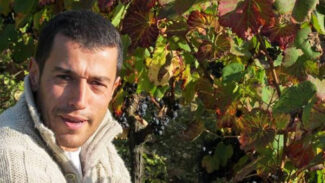
Vincent Roussely
“It was my childhood dream to work these soils,” says Roussely, who inherited the estate in 2001. “The terroir is ideal for Sauvignon Blanc, which makes up about 80% of our plantings, but at the heart of Roussely is a small plot of old-vine Gamay. We also have Côt (Malbec), Pineau d’Aunis and a little Cabernet Franc. We have always farmed organically, both for the health of the vines and out of social responsibility, but we were officially certified in 2007.”
The old-school methodology runs through every aspect of the winemaking process. Grapes are hand-harvested and are subject to slow, natural fermentation in the cool catacombs; Gamay undergoes the familiar Méthode Beaujolais, partial carbonic maceration in which some whole grapes are kept intact and begin alcoholic fermentation within the confines of their skins.
Evolving from tradition to technology, Roussely continues to experiment, using concrete eggs for some of his fermentations. “Innovative adaptation means more than simply exploring new techniques,” he says. “It also involves a commitment to ecological responsibility. Right now, about 65% of Loire Valley vineyards are organic and it’s our goal to see that number at 100% by 2030.”
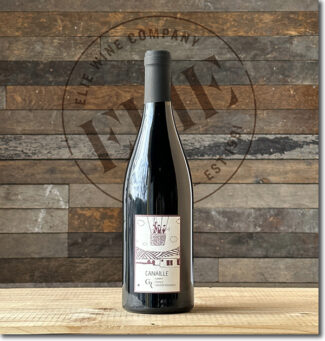 •1• Clos Roussely ‘Canaille’, 2021 VdF Loire-Touraine ‘Gamay’ ($21) Red
•1• Clos Roussely ‘Canaille’, 2021 VdF Loire-Touraine ‘Gamay’ ($21) Red
‘Canaille’ is the French word for ‘scoundrel.’ 100% Gamay from vines between 25 and 50 years old grown organically on clay and limestone. Aged six months in stainless steel, the old vines add a striking depth to this exuberant Gamay, replete with notes of crushed raspberry, black cherry and nutmeg.
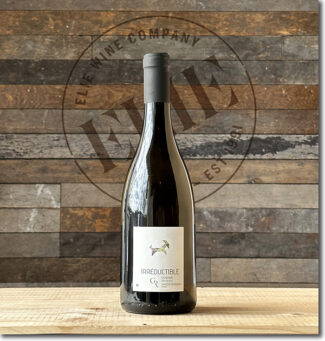 •2• Clos Roussely ‘Irréductible’, 2019 VdF Loire-Touraine ‘Sauvignon’ ‘natural’ ($34) White
•2• Clos Roussely ‘Irréductible’, 2019 VdF Loire-Touraine ‘Sauvignon’ ‘natural’ ($34) White
Refusing to use sulfur at bottling time is what cost this superb, 100% Sauvignon Blanc its AOP status, but no matter: Vincent Roussely is happy to let it shine through the VdF ‘Loire-Touraine.’ The wine shows complex aromas of white peach, citrus and sappy acidity with a bracing salinity at the finish.
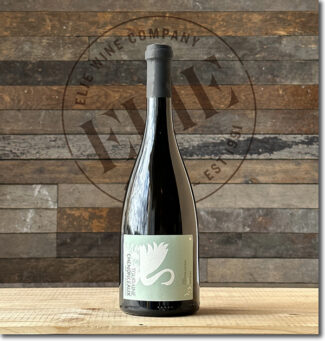 •3• Clos Roussely, 2020 Touraine-Chenonceaux Blanc ($29) White
•3• Clos Roussely, 2020 Touraine-Chenonceaux Blanc ($29) White
Touraine-Chenonceaux is its own unique appellation, inextricably linked with the Château of the same name. The vines used for Roussely’s wine are planted on slopes with good natural drainage where soils are mainly limestone, siliceous clay and perruches—the flint-based earth commonly found in the Loire terroirs.
100% unoaked Sauvignon Blanc with a minimum of sulfur dioxide at bottling; the wine shows stone fruit on the nose, especially white peaches, and carries a minerality through to a crisply acidic lemon-lime finish.
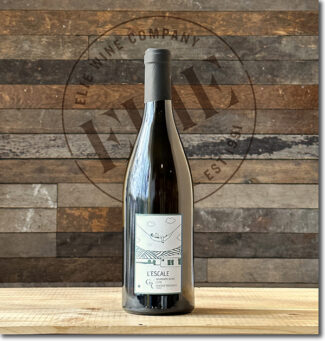 •4• Clos Roussely ‘L’Escale’, 2020 Touraine Blanc ($20) White
•4• Clos Roussely ‘L’Escale’, 2020 Touraine Blanc ($20) White
100% Sauvignon Blanc from vines that have grown in shale limestone for 10 to 40 years and are Guyot pruned. Fermentation is done using indigenous yeasts with occasional lees stirring over the course of élevage. Grapes are hand-harvested at modest yields of 50hl/ha, far less than 60hl/ha that the appellation allows. A very mineral-driven wine, it might be viewed as an affordable Sancerre alternative as it displays a similar profile: Newly mown grass, chamomile, chervil, thyme, honeysuckle and lime peel.
Domaine de la Charmoise
Henry Marionnet’s family has owned de la Charmoise since the 19th century, and he places such a premium on quality that he only produces certain wines in truly good vintages. Located within the quaint village of Soings deep in the forests of La Sologne, the family continues (as they always have done) to quietly push the envelope by viewing each vintage as a challenge presenting the goal of surpassing the last.
Between 1967 and 1978, nearly all Charmoise vines were replanted, so by now, they are all over 30 years old. The two key varieties are Gamay and Sauvignon Blanc, but the estate produces unique wines from grapes not found elsewhere in the world. ‘Provignage’, for example is produced from Romorantin, a rare white grape that produces herbaceous and sometimes tropical-fruit wines; Cépages Oubliés is made from the almost obsolete clone of Gamay de Bouze.
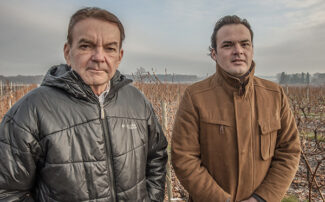
Henry and Jean-Sébastien Marionnet
A proponent of natural wines, Marionnet says, “My family has owned Domaine de la Charmoise since 1850; my father Claibert was a winemaker, of course, and I was expected to follow in his footsteps. But I never attended viticulture school—my parents were traditionalists and they didn’t want me coming back with revolutionary ideas. Therefore, my winemaking education involved working with the horses ploughing and clearing, and with a pickaxe, working the ground between the vines by hand. When I took over the domain in 1967, I began to change things. Some of the vines I inherited were of questionable merit, hybrids or similar sub-standard stock, so I set about replanting and expanding the vineyards. But I remained true to the words of the great Émile Peynaud who said, ‘Give me the most beautiful grapes in the world and I will make you the greatest wine in the world’.”
 •5• Domaine de la Charmoise ‘Première Vendange’, 2021 Touraine ‘natural’ ($24) Red
•5• Domaine de la Charmoise ‘Première Vendange’, 2021 Touraine ‘natural’ ($24) Red
The Gamay that produces ‘Première Vendange’ is (as both Marionnet and the barons of Beaujolais would like to make clear) traditional Gamay Noir à Jus Blanc as opposed to the red-fleshed varieties often used to add color to other wines. The vines that make up this cuvée were planted in 1967 and 1978 on a combination of flinty stones in a mix of sand, gravel and clay. The fruit is picked by hand and whole-bunch fermented in stainless steel vats via carbonic maceration, a process continued by indigenous yeasts. The result is velvet smooth with lithe, ripe fruit beneath a floral canopy that shows hibiscus and violet and a touch of anise—certainly a rival to a top Beaujolais Villages.
 •6• Domaine de la Charmoise ‘Gamay’, 2020 Touraine ($20) Red
•6• Domaine de la Charmoise ‘Gamay’, 2020 Touraine ($20) Red
Made from 40-50-year-old Gamay grapes grown in soils known locally as ‘perruches,’ which means ‘parrot’ but is actually a combination of flinty stones in a mix of sandy gravel and clay. A luscious wine bursting with plum, açaí and blackcurrant followed by more complex notes of kirsch and coffee.
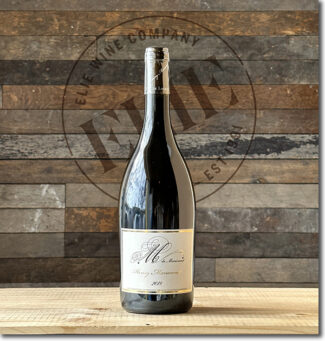 •7• M de Henry Marionnet ‘Sauvignon’, 2018 Touraine ‘natural’ ($38) White
•7• M de Henry Marionnet ‘Sauvignon’, 2018 Touraine ‘natural’ ($38) White
100% Sauvignon Blanc from the parcel that Marionnet considers to be the estate’s finest. Planted in 1970, these grapes only are permitted to make up ‘M’ in outstanding years to preserve the reputation of the label, which always promises rich, unctuous wines with brilliant energy and aromatics, massive focus and grip and acid precision.
Jérémy Quastana
Jérémy Quastana is a young vigneron who trained under Olivier Lemasson for a few years before snagging five acres of his own near Lemasson’s main plot in the Loir-et-Cher not far from Cheverny. Prior to that, Jeremy learned the trade at Marcel Lapierre’s Beaujolais winery and did a six-month internship at Clos Ouvert in Chile.
 Jérémy Quastana, photo: Alberto Rodriguez
Jérémy Quastana, photo: Alberto Rodriguez
Quastana farms a single plot composed of young-vine Gamay, middle-aged Côt and old-vine Gamay planted on a gentle slope of clay over silex. Jeremy has not applied for AOP recognition, since—like many natural winemakers—he knows the challenge of following commission rules. His wines are unembellished—fresh, pure juice that may serve as a perfect aperitif on a warm day, but which always qualify as a serious approach to winemaking the natural way.
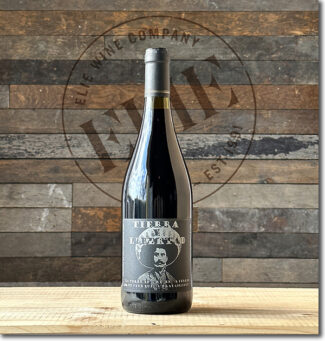 •8• Jérémy Quastana ‘Tierra y Libertad’, 2020 VdF Loire ‘Gamay’ Rouge ‘natural’ ($32) Red
•8• Jérémy Quastana ‘Tierra y Libertad’, 2020 VdF Loire ‘Gamay’ Rouge ‘natural’ ($32) Red
The name is from the famous phrase by Emiliano Zapata, whose picture features prominently on the label; Quastana considers himself a rebel, and his wines often reflect an atypical expression of a given varietal. This one, 100% Gamay, is no exception, showing brine-soaked wild berries, black pepper, cocoa and herbs.
Marie Thibault
“I grew up in the Loire Valley, but unlike many vignerons working in the Loire, I did not come from a winemaking family,” says Marie Thibault, adding, “But also unlike many of them, I have degrees in both biology and oenology.”
Marie Thibault began making wine in the early 2000s, working for a time with François Chidaine in Montlouis, where she fell in love with Chenin Blanc. In 2011, she founded her own nine acre estate on a single windy slope in Azay-le-Rideau, a lesser known commune of Touraine. She immediately converted to organics and has been certified with Ecocert since 2014. Among the natural elements in her vineyards is the flock of two dozen ewes that graze between the vine rows during the autumn; every ten days, they are penned inside a new hectare to keep the soil naturally fertile and the grass clipped.
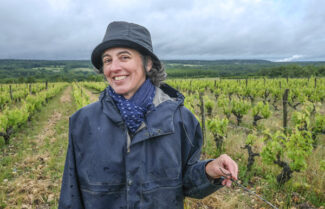
Marie Thibault, photo: Jean-Yves Bardin
“My vineyard is small, but the soils are extremely varied and as such, so are the grapes I grow. I work with Côt (Malbec), and have a special love for Gamay, Grolleau, Chenin Blanc and Sauvignon Blanc. Most of my vines are at least 50 years old. I compensate for small production by purchasing from organic estates nearby.”
 •9• Marie Thibault ‘Les Grandes Vignes’, 2018 VdF Loire ‘Gamay’ Rouge ‘natural’ ($41) Red
•9• Marie Thibault ‘Les Grandes Vignes’, 2018 VdF Loire ‘Gamay’ Rouge ‘natural’ ($41) Red
Thibault’s unique lens on Gamay is seen in this example produced from 50+ year-old vines she discovered growing adjacent to her plot on flinty silex soil. The vines were untrained and un-trellised, and harvest was exceptionally labor-intensive. She allows a 10-month maceration in order to shows off the Gamay’s savory side, with crisp rhubarb, earthy red berry notes and fine-grained, well-integrated tannins showcased.
- - -
Posted on 2023.02.15 in Touraine, France, Wine-Aid Packages | Read more...
The Champagne Society April 2023 Selection: Champagne André Clouet
Champagne André Clouet
‘Un Jour de 1911 …’
Grand Cru Bouzy
Blanc de Noirs, Disgorgement Date: August 22, 2022
Special Price for members of the Champagne Society is $81. Sold Out.
The Clouet family is a family of winemakers whose origins are lost in the mists of time.
What we can say for certain is that it was founded by a printer in the Versailles court of Louis XV and that the phrase that graces the winery’s labels (‘Ancien Regime’) is a tribute to this legacy. It took more than two centuries and several generations of Clouets to find and purchase land in the exquisite terroir of Bouzy in the southern part of the Mountain of Reims.
Under the mastery of Jean-François Clouet, André Clouet has modernized, but the team is inspired to preserve the personality of its Champagne as expressed through the personality of its terroir. Says Jean-François, “During Creation, when God grew weary of sculpting the mountains, razing the deserts and firing up the volcanoes, he treated himself to a few moments of pleasure and designed a little earthly paradise called Bouzy.”
Known for its sublime Pinot Noir-based Champagnes, among the most notable collections, the Dream Vintage Cuvées, are made entirely with Chardonnay and dedicated to the greatest recent vintages.
In addition, Coteaux Champenois from André Clouet reflects perhaps Champagne’s greatest secret: High quality still wine that rivals many from Burgundy.
Lastly, ‘Cuvée 1911’ is a brilliant multi-vintage Champagne made in commemoration of the year Jean-François Clouet’s great grandfather designed the bottles front label.
All are explored in this week’s many-tiered package.
The Landscape of Champagne
Having been defined and delimited by laws passed in 1927, the geography of Champagne is easily explained in a paragraph, but it may take one a lifetime to understand it.
Ninety-three miles east of Paris, Champagne’s production zone spreads across 319 villages and encompasses roughly 85,000 acres. 17 of those villages have a legal entitlement to Grand Cru ranking, while 42 may label their bottles ‘Premier Cru.’ Four main growing areas (Montagne de Reims, Vallée de la Marne, the Côte des Blancs and the Côte des Bar) encompass nearly 280,000 individual plots of vines, each measuring a little over one thousand square feet.
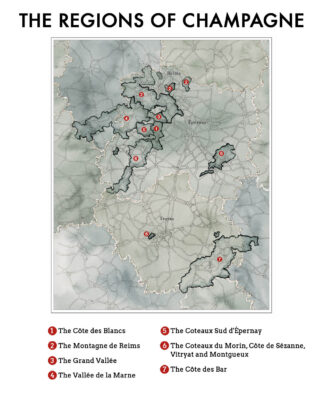
Beyond the overview lies a permutation of particulars; there are nearly as many micro-terroirs in Champagne as there are vineyard plots. Climate, subsoil and elevation are immutable; the talent, philosophies and techniques of the growers and producers are not. Ideally, every plot is worked according to its individual profile to establish a stamp of origin, creating unique wines that complement or contrast when final cuvées are created.
Champagne is predominantly made up of relatively flat countryside where cereal grain is the agricultural mainstay. Gently undulating hills are higher and more pronounced in the north, near the Ardennes, and in the south, an area known as the Plateau de Langres, and the most renowned vineyards lie on the chalky hills to the southwest of Reims and around the town of Epernay. Moderately steep terrain creates ideal vineyard sites by combining the superb drainage characteristic of chalky soils with excellent sun exposure, especially on south and east facing slopes.
Exploring Pinot Country: The Montagne de Reims
Whether based on tradition or technical savvy, the choice of the grape variety and rootstock best suited to a specific plot is an indispensable factor in determining the ultimate success of any lieu-dit, or named vineyard. Whereas most Champagne is a blend of Pinot Noir and Chardonnay, both grapes make unique demands on terroir, and where one may thrive, the other may not. Sandwiched between the Marne and the Vesle Rivers, forming a broad headland of forests and thickets, the Montagne de Reims is particularly suited to the former; Pinot Noir vines carpet the western and northern flanks to form a vast semicircle extend from Louvois to Villers-Allerand, encompassing the famous villages of Bouzy and Ambonnay.

Grand Crus Bouzy and Ambonnay: The Epicenter of Pinot Noir
Like Elizabeth I and Mary Queen of Scots, the Grand Crus of Bouzy and Ambonnay co-exist in begrudging mutual respect and rivalry, and unless one figures out how to sign the other’s death warrant, this will continue for the foreseeable future. At its closest point, the distance between the two communes is less than a long drive with a golf club, and each have shored up a reputation for superlative wines from the south side of the Montagne de Reims hill.
With a population just under one thousand, Bouzy is the best-known Champagne village to produce still wine (Bouzy Rouge) along with its legendary Pinot Noir-focused sparkling wine. More than nine hundred acres in Bouzy are under vine, with 87% of them Pinot Noir, 12% Chardonnay and a scant 0.2% Pinot Meunier. The most prominent Champagne houses with a Bouzy presence are Bollinger, Duval-Leroy, Moët & Chandon, Mumm, Pol Roger and Taittinger.
Nearby Ambonnay shares a nearly identical terroir with Bouzy on the south side of the Montagne de Reims hill, and is similarly appointed, although with slightly less Pinot Noir grown and a bit more Chardonnay—white grapes accounts for about 20% of the vineyards. Like Bouzy, ‘Ambonnay Rouge’ represents a small portion of wine production. Prominent Champagne houses that control Ambonnay vineyards include Duval Leroy, Moët & Chandon, Mumm, Piper Heidsieck, Pol Roger and Roederer.
Champagne André Clouet
The Privileged Custodian of Bouzy
Somewhat less prominent than the powerhouse producers mentioned above is grower-producer Jean-François Clouet of Champagne André Clouet, although Champagne Clouet has been around longer. The Clouet family traces its Bouzy roots to 1492 and at one time was the official printmakers for the court of King Louis XV; the classically pretty labels that grace their Champagne bottles today pay homage to their aesthetic history. Clouet grapes are sourced exclusively from 20 acres of coveted mid-slope vineyards in the Grand Cru villages of Bouzy and Ambonnay.
Says Jean-François Clouet, “The vineyards are like beautiful fabrics, each one contributing textures and colors that once assembled, are transformed into a designer gown. Successfully pieced together, it is Haute Couture.”

Born and raised in Bouzy, Jean-François still lives in his family’s 18th century home; with inimitable wit, he refers to himself as ‘a combination of winemaker and circus ringmaster.’ In fact, the French refer to him as ‘chef de cave’—a cellar master. He is arguably the region’s most qualified historian and insists that, without acknowledging the role that the past has played on his winemaking decisions, you can’t truly appreciate his wines.
“To understand Champagne as a whole you need to understand its political history,” he says. “Attila the Hun, the Crusaders, the Templars and Marie Antoinette have all walked here; the birth of the monarchy and the Battle of the Cathalunian Fields took place nearby. In 1911, my great grandfather designed the label that graces our bottles today; I like the idea of the work of human hands in pruning, performing the same actions as my grandfather and even the Romans, who planted vines here 2000 years ago.”
‘One Day in 1911 …’ A Champagne Fairytale
Commemorating the year Jean-François Clouet’s great grandfather designed the bottles front label, ‘Un Jour de 1911…’ is the domain’s tête de cuvée, with production limited to 1,911 bottles per disgorgement. Made from 100% Pinot Noir sourced from the Clouet’s ten best lieux-dits in the Grand Cru vineyards of Bouzy, the wine has been aged for six years on the lees—a remarkable span for a non-vintage Champagne.
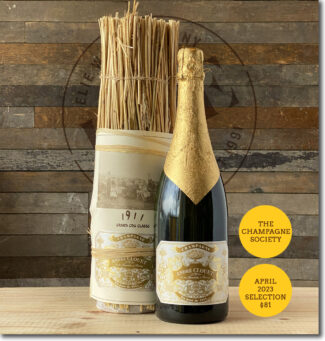 Champagne André Clouet ‘Un Jour de 1911…’ Grand Cru Bouzy, Brut ($90)
Champagne André Clouet ‘Un Jour de 1911…’ Grand Cru Bouzy, Brut ($90)
At dosage of 0.5 g/l, 50% of the wine was fermented in stainless steel tanks and 50% in Sauternes barrels. 50% perpetual reserve with an assemblage that also includes four vintages: all of which are made from Grand Cru Bouzy estate-grown fruit.
Dosage 0.5gr, 50% 2008 vintages fermented in barrels and It is delicately perfumed with sweet rose petal and jasmine and framed in austere minerality and balanced autolytic notes. Despite the relatively recent disgorgement, the mousse presents itself as extraordinarily elegant.
The ‘Dream’ Collection
Exploring Chardonnay: A Retrospective Spanning A Decade
Blanc de Blancs is a term found only in Champagne, and is used to refer to Champagne produced entirely from white grapes, most commonly Chardonnay. Pinot Blanc and Arbane can also be used, as well as a number of other varieties permitted in the appellation, but these are less common. In fact, André Clouet Dream Vintage Grand Cru is made entirely with Chardonnay from vineyards planted on clayey-calcareous soils.
Vintage Champagnes represent less than 5 percent of all Champagne production, typically produced only in select vintages. Vintage Champagne is aged for a minimum of three years in the bottle, as opposed to 15 months for non-vintage versions. “Aging is a luxury factor,” says James Beard Award-winning sommelier Belinda Chang: “There’s a lot of painstaking work and labor and real estate required to bring those gorgeous bottles of Champagne to us. Not only are they sourcing grapes from their best vintage, but the grapes are coming from highly venerated vineyards.”
Champagne André Clouet’s ‘Dream’ collection is a retrospective of Champagne’s top vintages over the past decade or so, each release labeled in a distinct color based on Cadillacs from the 1950s; Jean-François attempt to duplicate a ‘dream’ era for automotive elegance and power. A blend of the sharp, acidic Chardonnays of Mesnil-sur-Oger with the richer Chardonnays of Bouzy, the wines showcase the highest expression of Blanc de Blancs produced by the domain.
Harvesting is carried out manually, selecting the grapes in the vineyard. Once they arrive at the winery, and once they are pressed, the grapes ferment in small stainless-steel vats at a controlled temperature between 16ºC and 18ºC. Once the malolactic fermentation in these same vats has ended, the champagne aged in bottles for a minimum of 4 years with their lees, before the manual disgorgement.
 2004 Dream – Champagne André Clouet – Brut ($87)
2004 Dream – Champagne André Clouet – Brut ($87)
2004 was an extremely good vintage throughout Champagne; a cool spring warmed up in time to ensure a successful budburst and flowering. A sunny summer followed and conditions were so favorable that some producers had to green harvest to curb the overabundance of leaf growth. The previous year’s drought meant that water-tables within the soils were limited, subjecting the vines to slight water stress and concentrating the fruit—a good thing, in this case. Clouet’s 2004 offers a complex core of brioche, apples, citrus and chalky minerality. Disgorged February 2021.
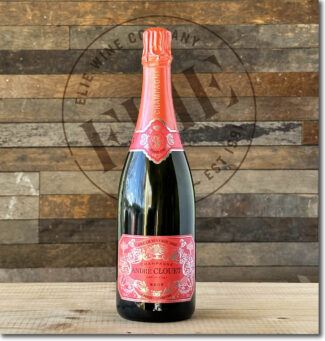 2005 Dream – Champagne André Clouet – Brut ($108)
2005 Dream – Champagne André Clouet – Brut ($108)
2005 was an excellent vintage, just short of outstanding. A dry winter and a bright spring allowed for a successful budburst and flowering, and good weather hung around until July, when persistent rains showers brought both humidity and mildew. Conditions marginally dried out in August, but temperatures were also cooler beyond the one significant heat spike that kick-started ripening. September delivered the warm, steady conditions needed to dry out the vines and push the surviving grapes to phenolic ripeness, while cool nights helped retain essential acidity and aromatics. 2005 ‘Dream’ shows layers of mineral-infused stone fruit on a silky, mid-weight frame, with gorgeous length and a refined, subtle mousse. Disgorged October 2021
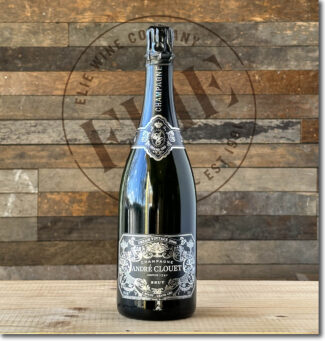 2006 Dream – Champagne André Clouet – Brut ($72)
2006 Dream – Champagne André Clouet – Brut ($72)
Overall, 2006 was average in Champagne, with good wines made only by circumspect vignerons. Flowering was excellent, but the growing season was defined by a markedly dry summer, with June and July delivering a series of searingly hot weeks and a premature ripening of berries. A significant mid-summer thunderstorm pelted various vineyards with hail, following which, the sunny streak did not return until early autumn. A gloomy August brought humidity inspiring rot, mildew and unwanted bouts of botrytis. Fortunately, September saw a return of warm, dry days which helped push the fruit to phenolic ripeness while cool nights were conducive to preserving essential acidity. 2006 Clouet offers wonderful bouquet of apples and poached pear along with buttered brioche and palate rich in salty minerals and a touch of hazelnut praline. Disgorged July 2021.
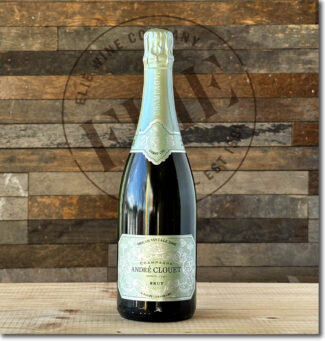 2008 Dream – Champagne André Clouet – Brut ($87)
2008 Dream – Champagne André Clouet – Brut ($87)
In Champagne, the 2008 vintage was sublime, especially in Bouzy. To earn such distinction, cooler summer weather is almost a requirement—for grapes to reach phenolic ripeness sufficient to harvest, it helps is the process is slow and steady. The only downside of 2008 was the global recession which drove prices downward and effected every aspect of Champagne production. Although the region was hit hard by economics, the 2008 vintage is considered nearly legendary for quality. Clouet’s 2008 expresses the pedigree of the vintage: Complex and nuanced, it boasts dried pear, mint, chamomile, crushed rock, dried flowers and pastry overtones laced together over an acidic core. Disgorged October 2021.
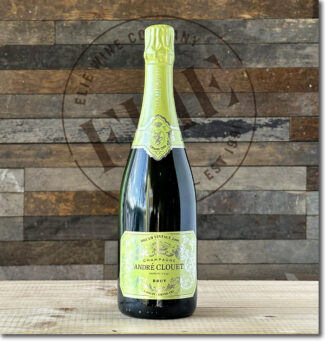 2009 Dream – Champagne André Clouet – Brut ($62)
2009 Dream – Champagne André Clouet – Brut ($62)
2009 was a fabulous vintage in Champagne; a dry winter left the water table low, but spring rains quickly topped them off. Vicious storms popped up in July, hitting Aÿ fairly hard, but Bouzy came through virtually unscathed. August brought warmth and sunshine and enough dry heat to prevent rot and mildew; nights remain cool, and acidity from this vintage may be pronounced. Clouet’s 2009 is a beautifully balanced package, with acids reined in by whirlwind of creamy aromas and caramelized apple, green pear, brioche, lemon-citrus peel on the palate. Disgorged July 2021.
 2013 Dream – Champagne André Clouet – Brut ($54)
2013 Dream – Champagne André Clouet – Brut ($54)
Chardonnay grapes were the clear champions in a very average growing season; 2013 suffered from a cold and wet lead-in winter and a spring in which budburst and flowering were delayed. Cooler than normal temperature subjected the vines to millerandage and coulure, cutting yields. Aube and Marne experienced tricky weather throughout much of the season and a July hailstorm further reduced the crop. Among the vintage Champagnes produced, Blanc de Blanc were the most notable, and Clouet’s 2013 is voluptuous and vibrant with lemon oil, lightly-toasted walnuts, crisp yellow apples, acacia honey and a racy, acidic finish. Disgorged October 2021.
The ‘Dream’ Collection Set
This six-bottle set is an excellent opportunity to sample the nuances of each of a half dozen notable growing seasons for Champagne André Clouet. A limited release of 36 sets were assembled by the producer specially for Elie Wine Co. ($470) Limited.

Still in Champagne: Introducing Coteaux Champenois
Covering the same territory as Champagne, Coteaux Champenois may be the wine world’s most celebrated oxymoron: Flat Champagne. By ‘flat’, of course, we are not talking about the week-old Andre in the back of the fridge or the after-effects of shaking a bottle of Cristal after winning the Grand Prix, but the intentional act of releasing a still wine from the same terroir that would otherwise undergo the extraordinary process used to create Champagne.
Spread across 319 communes, Coteaux Champenois producers are entitled to use seven varieties, alone or in tandem; seven grape varieties are sanctioned in the production of Coteaux Champenois, including the Champagne staples Chardonnay, Pinot Noir and Pinot Meunier along with Arbane, Petit Meslier and the Pinot derivatives, Pinot Blanc and Pinot Gris. In general, all these grapes thrive at region’s latitude (48 – 49° North) although like their sparkling counterparts, Coteaux Champenois wines tend to be dry and light-bodied with naturally high acidity. The reds are much better in the warmer vintages of recent years, as the predominant variety, Pinot Noir, is able to ripen more consistently.
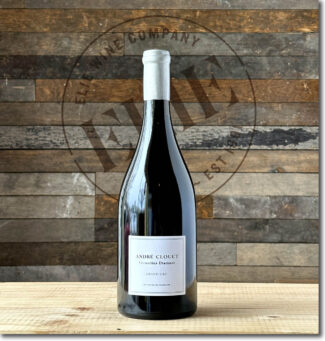 André Clouet ‘Versailles Diamant’, 2015 Coteaux Champenois Grand Cru Blanc ($108)
André Clouet ‘Versailles Diamant’, 2015 Coteaux Champenois Grand Cru Blanc ($108)
Tyson Stelzer (Wine Spectator, Decanter, Vinous) refers to Diamant as ‘the best Coteaux Champenois I have tasted to date.’ Sourced from the Grand Cru vineyards of Bouzy and Ambonnay, the 100% Chardonnay wine spends 20 months in Vicard barrels. Beautifully textured, the wine shows green apple, lemon, tropical fruit, pineapple, dried flowers with a persistent lemon and lime finish.
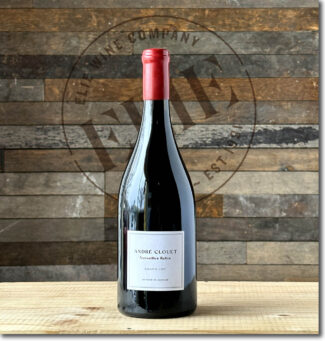 André Clouet ‘Versailles Rubis’, 2015 Coteaux Champenois Grand Cru Rouge ($108)
André Clouet ‘Versailles Rubis’, 2015 Coteaux Champenois Grand Cru Rouge ($108)
Produced from pure Pinot Noir sourced from Grand Cru vineyards in the heart of the Montagne de Reims, the varieties undisputed home. Like the Blanc, the Rouge is aged for 20 months in Vicard barrels—one of the finest coopers in the region. The wine shows tart cherry behind silky tannins a clear and pronounced minerality on the palate.
- - -
Posted on 2023.02.01 in France, The Champagne Society, Champagne | Read more...
Featured Wines
- Notebook: A’Boudt Town
- Saturday Sips Wines
- Saturday Sips Review Club
- The Champagne Society
- Wine-Aid Packages
Wine Regions
Grape Varieties
Aglianico, Albarino, Albarín Tinto, Albillo, Alicante Bouschet, Aligote, Altesse, Arbanne, Arcos, Auxerrois, Barbarossa, Beaune, Biancu Gentile, Bonarda, bourboulenc, Cabernet Sauvignon, Caladoc, Calvi, Carignan, Chablis, Chenin Blanc, Cinsault, Clairette, Cortese, Corvinone, Cot, Counoise, Dolcetto, Fiano, folle Blanche, Frappato, Fumin, Gamay, Garganega, Garnacha Tintorera, Godello, Graciano, Grenache, Grenache Blanc, Grolleau, Groppello, Jacquère, Juan Garcia, Lladoner Pelut, Macabeo, Maconnais, Malbec, Malvasia, Malvasia Nera, manseng, Marcelan, Marselan, Marzemino, Melon de Bourgogne, Mencía, Merlot, Montepulciano, Montònega, Mourv, Mourvèdre, Muscadelle, Muscat, Natural, Nebbiolo, Nero d'Avola, Niellucciu, Palomino, Patrimonio, Pecorino, Pedro Ximénez, Persan, Pineau d'Aunis, Pinot Auxerrois, Pinot Gris, Pinot Meunier, Pouilly Fuisse, Pouilly Loche, Poulsard, Riesling, Rose, Rousanne, Sagrantino, Sangiovese, Sauvignon, Sciacarellu, Serine, Souson, Sumoll, Tempranillo, Teroldego, Timorasso, Trebbiano Valtenesi, Treixadura, trepat, Trousseau, Ugni Blanc, Vermentino, Viognier, Viura, Xarel-loWines & Events by Date
- September 2025
- August 2025
- July 2025
- June 2025
- May 2025
- April 2025
- March 2025
- February 2025
- January 2025
- December 2024
- November 2024
- October 2024
- September 2024
- August 2024
- July 2024
- June 2024
- May 2024
- April 2024
- March 2024
- February 2024
- January 2024
- December 2023
- November 2023
- October 2023
- September 2023
- August 2023
- July 2023
- June 2023
- May 2023
- April 2023
- March 2023
- February 2023
- January 2023
- December 2022
- November 2022
- October 2022
- September 2022
- August 2022
- July 2022
- June 2022
- May 2022
- April 2022
- March 2022
- February 2022
- January 2022
- December 2021
- November 2021
- October 2021
- September 2021
- August 2021
- July 2021
- June 2021
- May 2021
- April 2021
- March 2021
- February 2021
- January 2021
- December 2020
- November 2020
- October 2020
- September 2020
- August 2020
- July 2020
- June 2020
- May 2020
- April 2020
- March 2020
- February 2020
- January 2020
- December 2019
- November 2019
- October 2019
- September 2019
- August 2019
- July 2019
- June 2019
- May 2019
- April 2019
- March 2019
- February 2019
- January 2019
- December 2018
- November 2018
- October 2018
- September 2018
- August 2018
- July 2018
- June 2018
- May 2018
- April 2018
- March 2018
- February 2018
- January 2018
- December 2017
- November 2017
- October 2017
- September 2017
- August 2017
- July 2017
- June 2017
- May 2017
- April 2017
- March 2017
- February 2017
- January 2017
- December 2016
- November 2016
- October 2016
- September 2016
- August 2016
- July 2016
- June 2016
- May 2016
- April 2016
- March 2016
- February 2016
- January 2016
- December 2015
- November 2015
- October 2015
- September 2015
- August 2015
- July 2015
- June 2015
- May 2015
- April 2015
- March 2015
- February 2015
- January 2015
- December 2014
- November 2014
- October 2014
- September 2014
- August 2014
- July 2014
- June 2014
- April 2014
- March 2014
- February 2014
- January 2014
- December 2013
- November 2013
- October 2013
- September 2013
- August 2013
- July 2013
- June 2013
- May 2013
- April 2013
- March 2013
- February 2013
- January 2013
- December 2012
- November 2012
- October 2012

